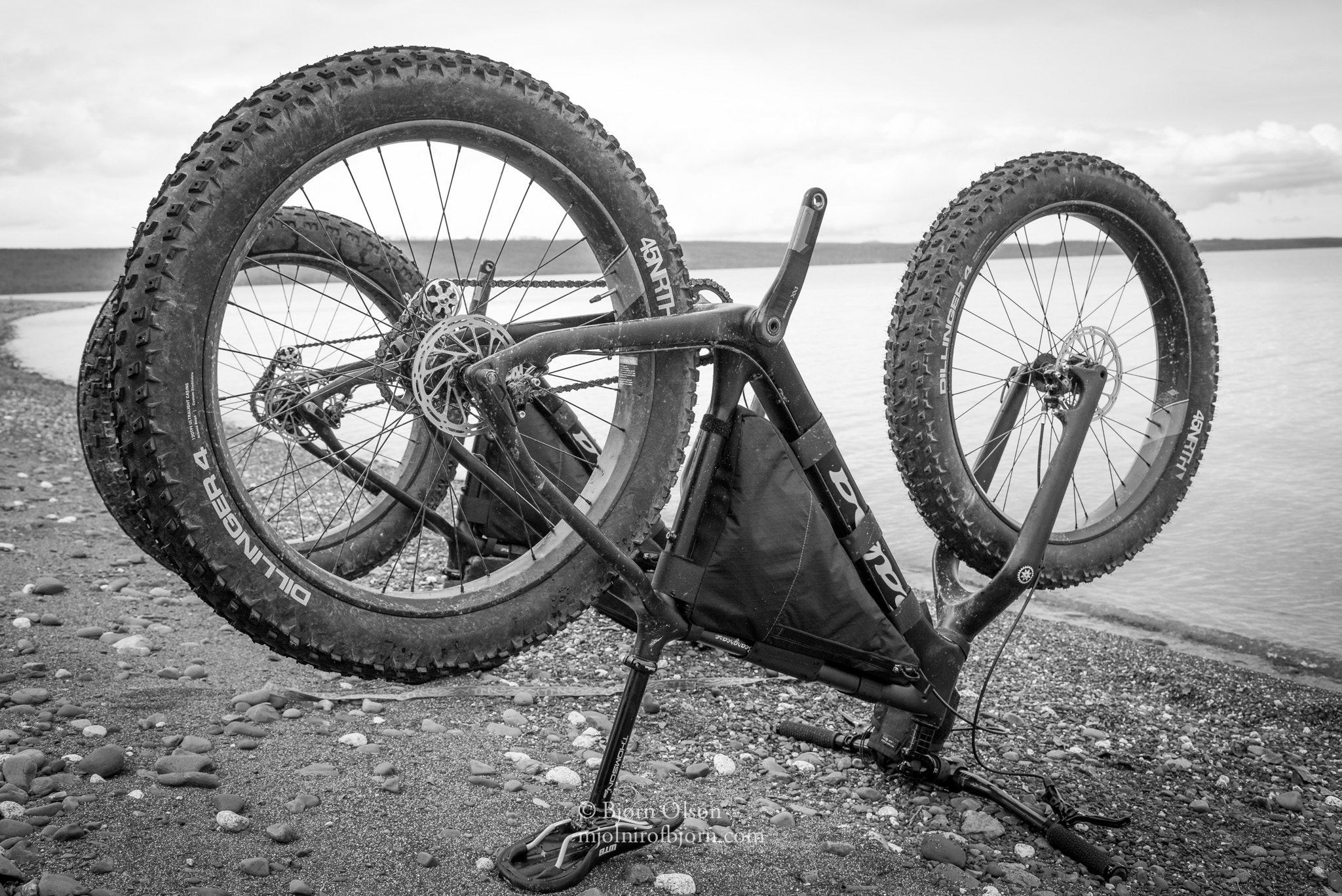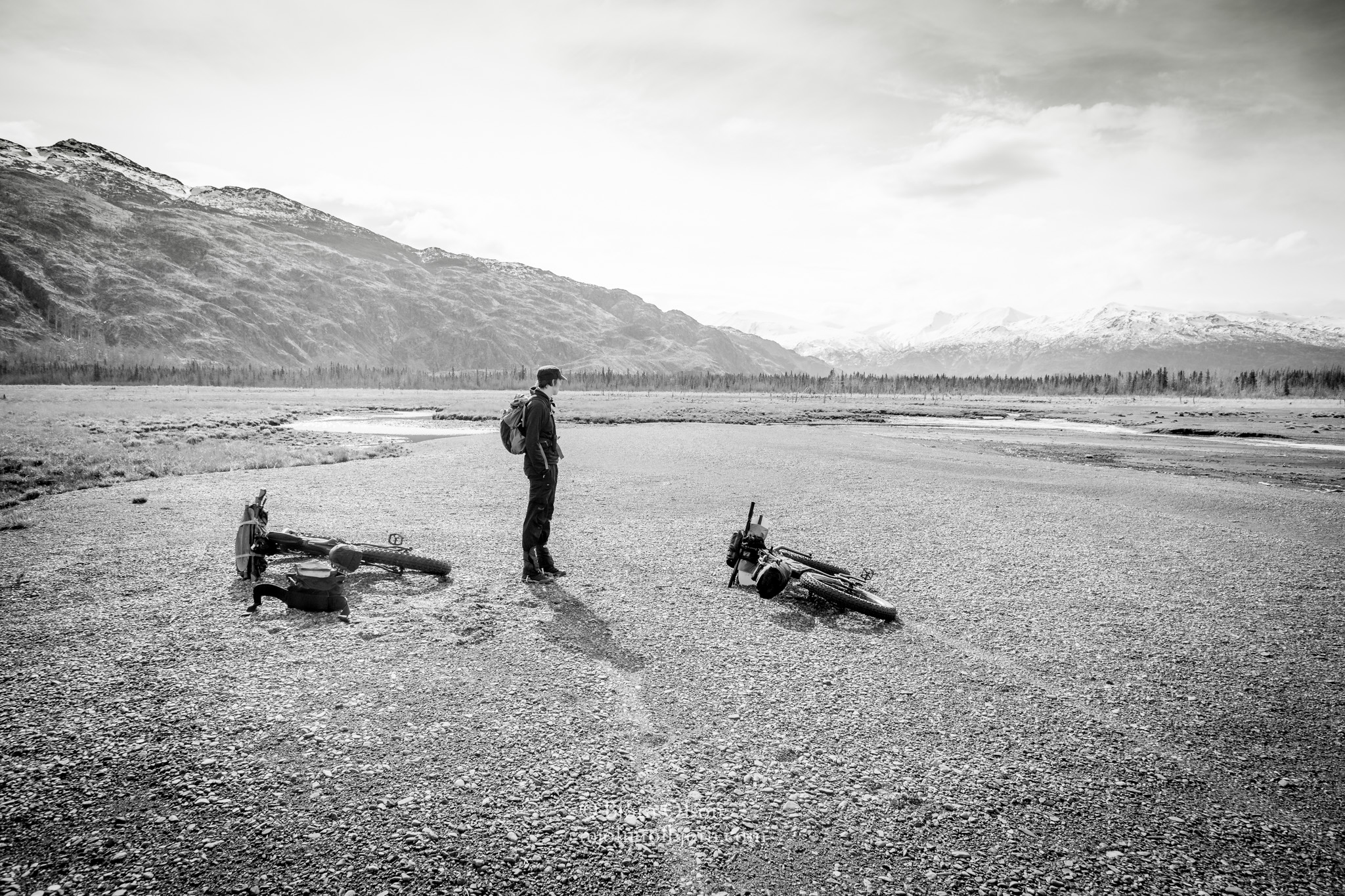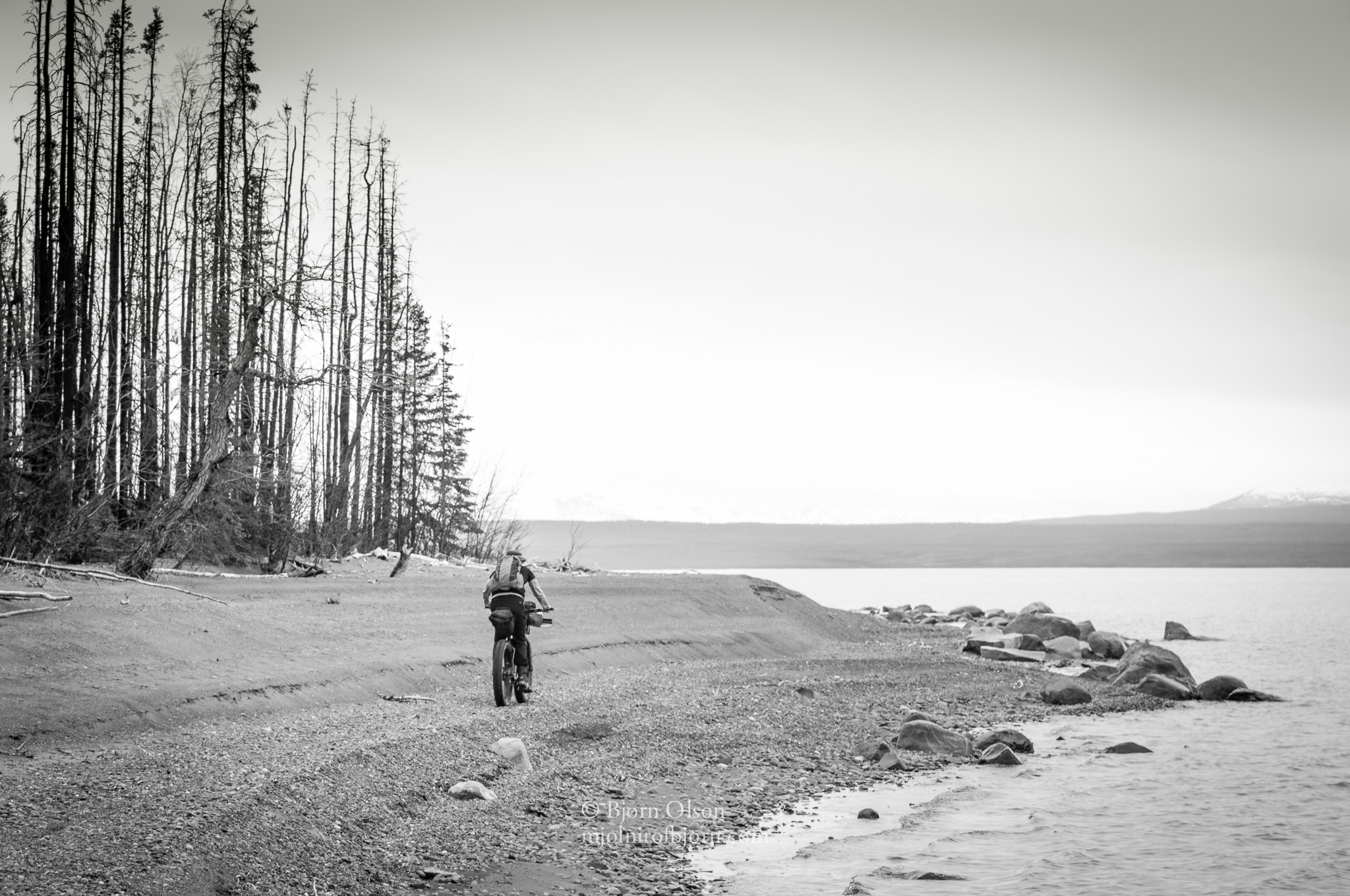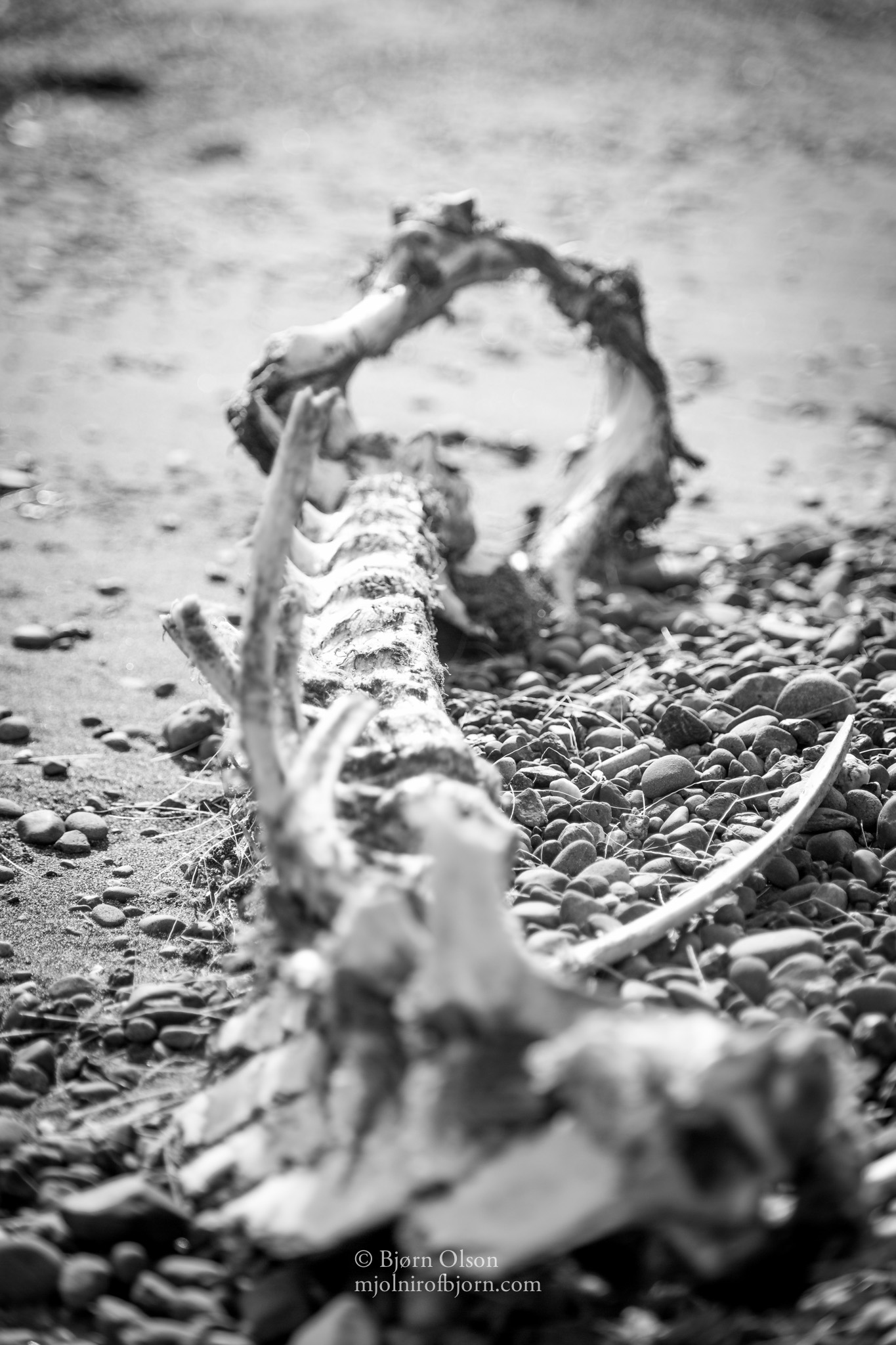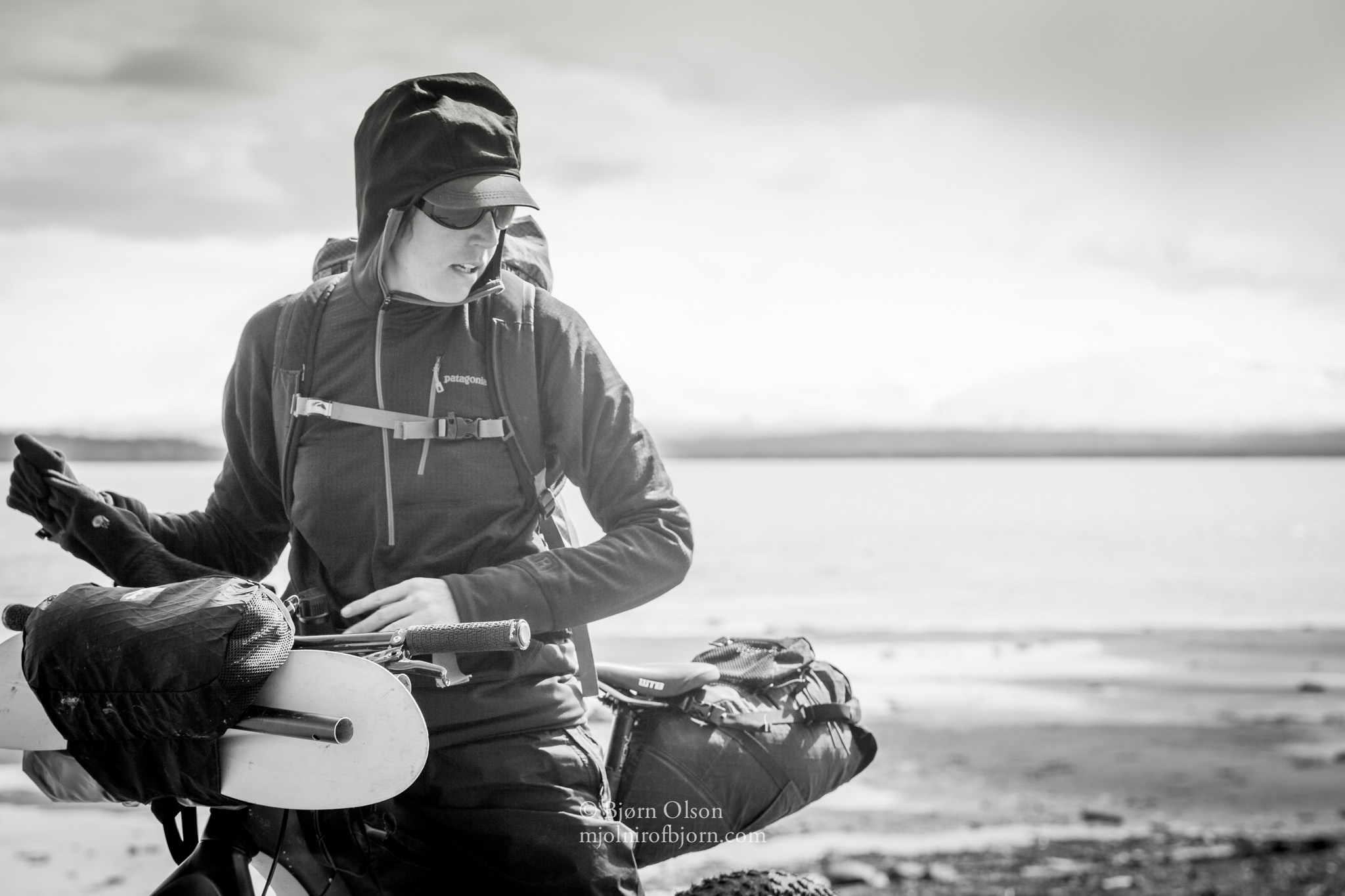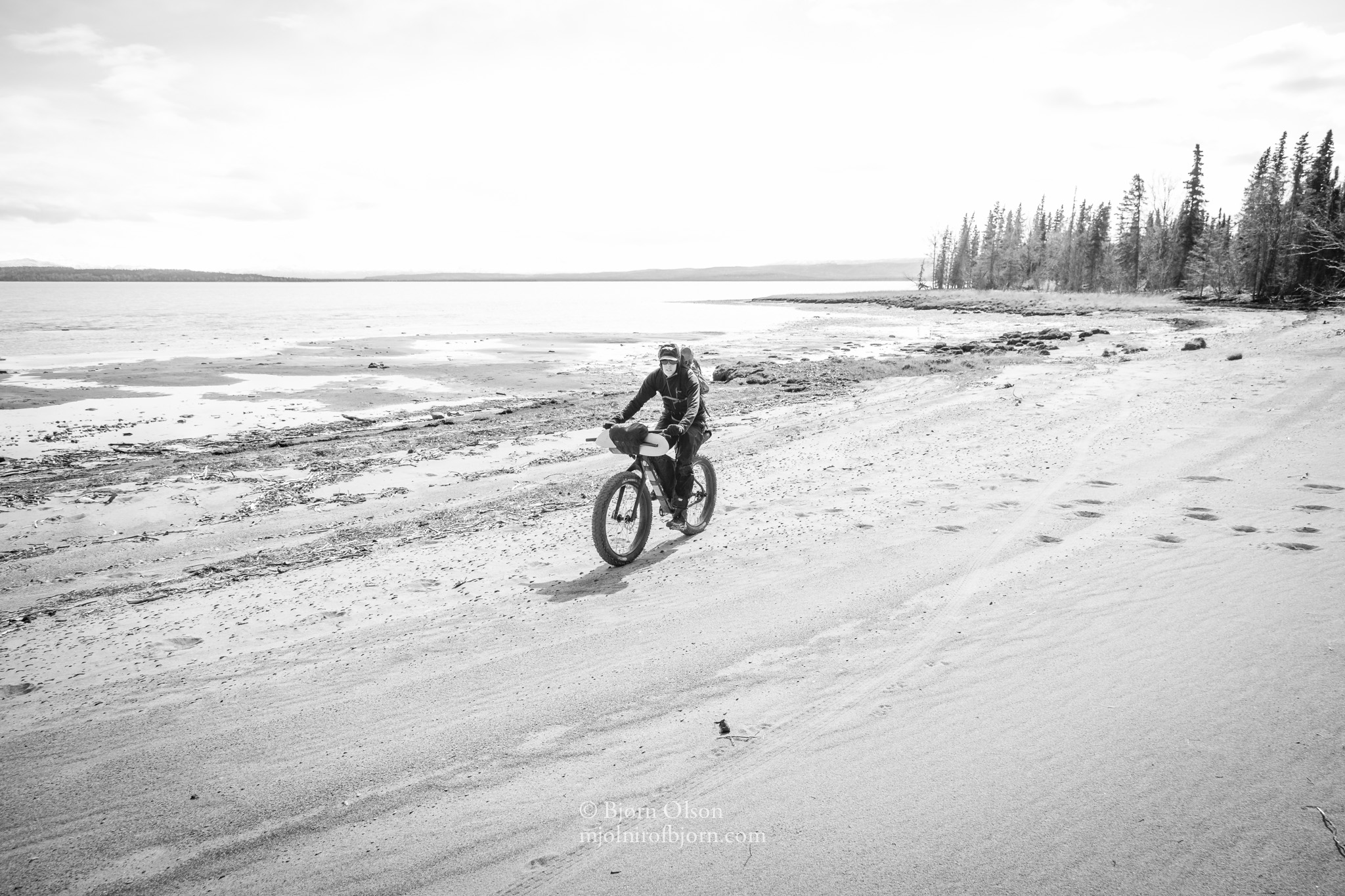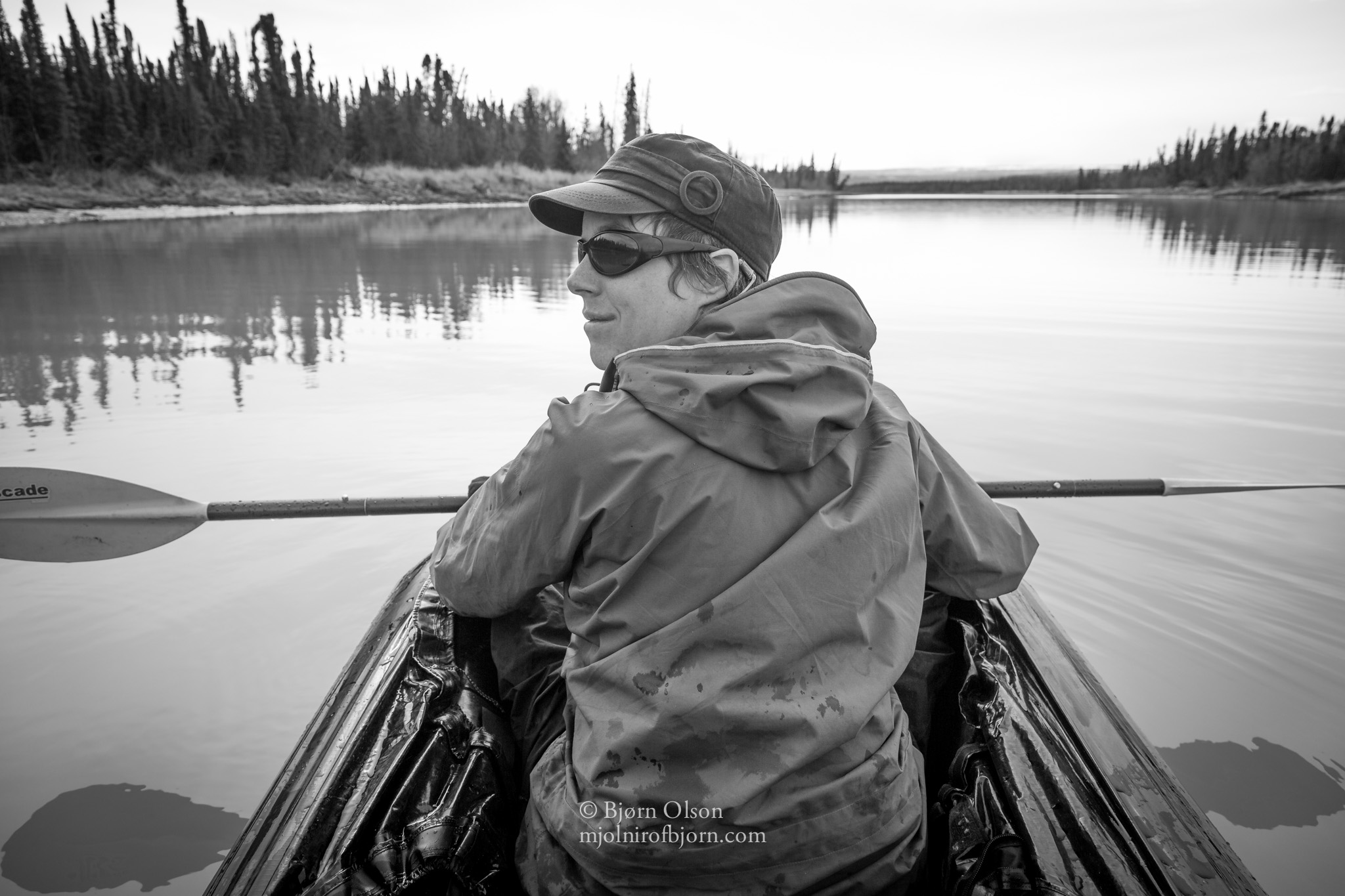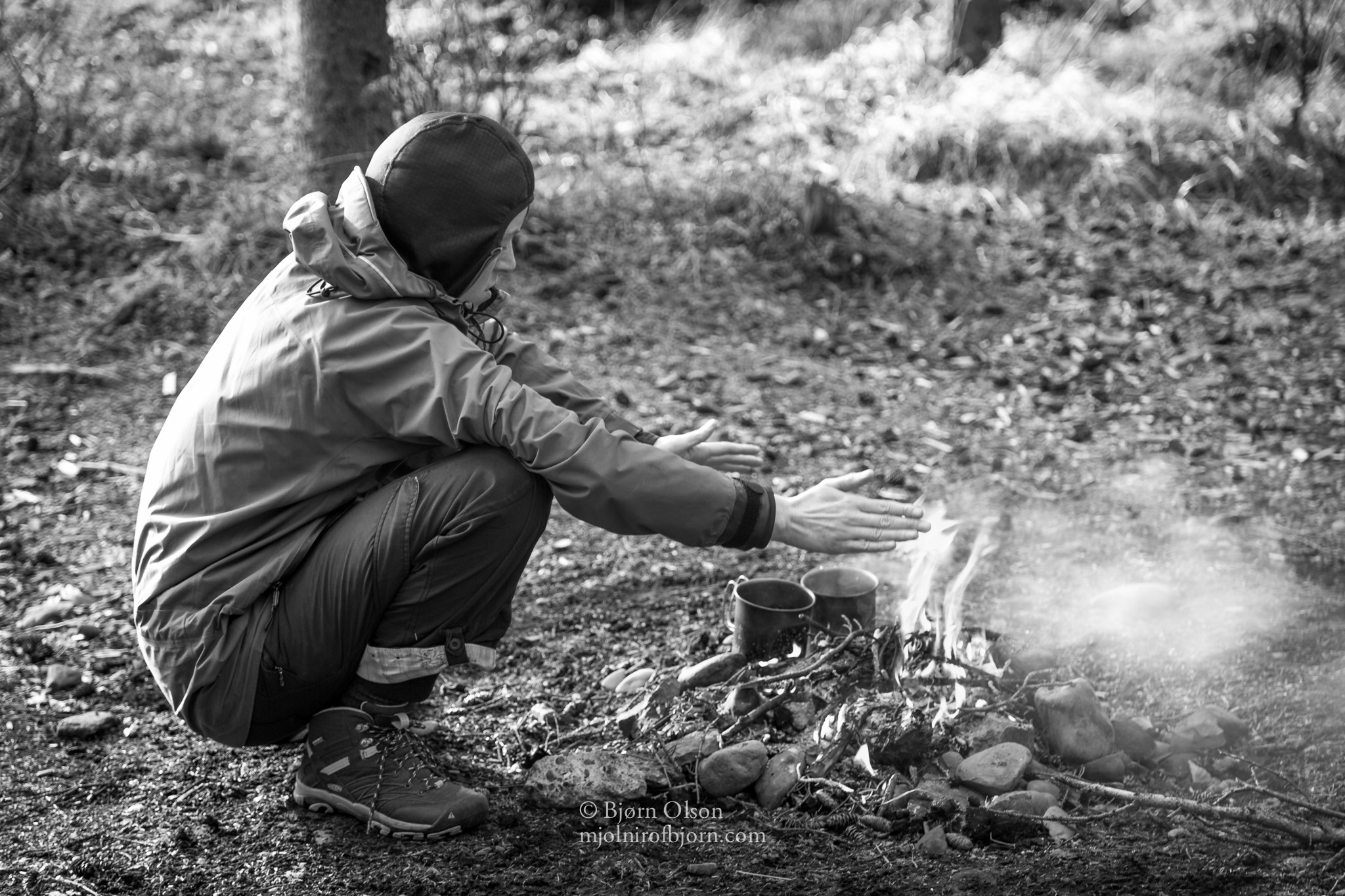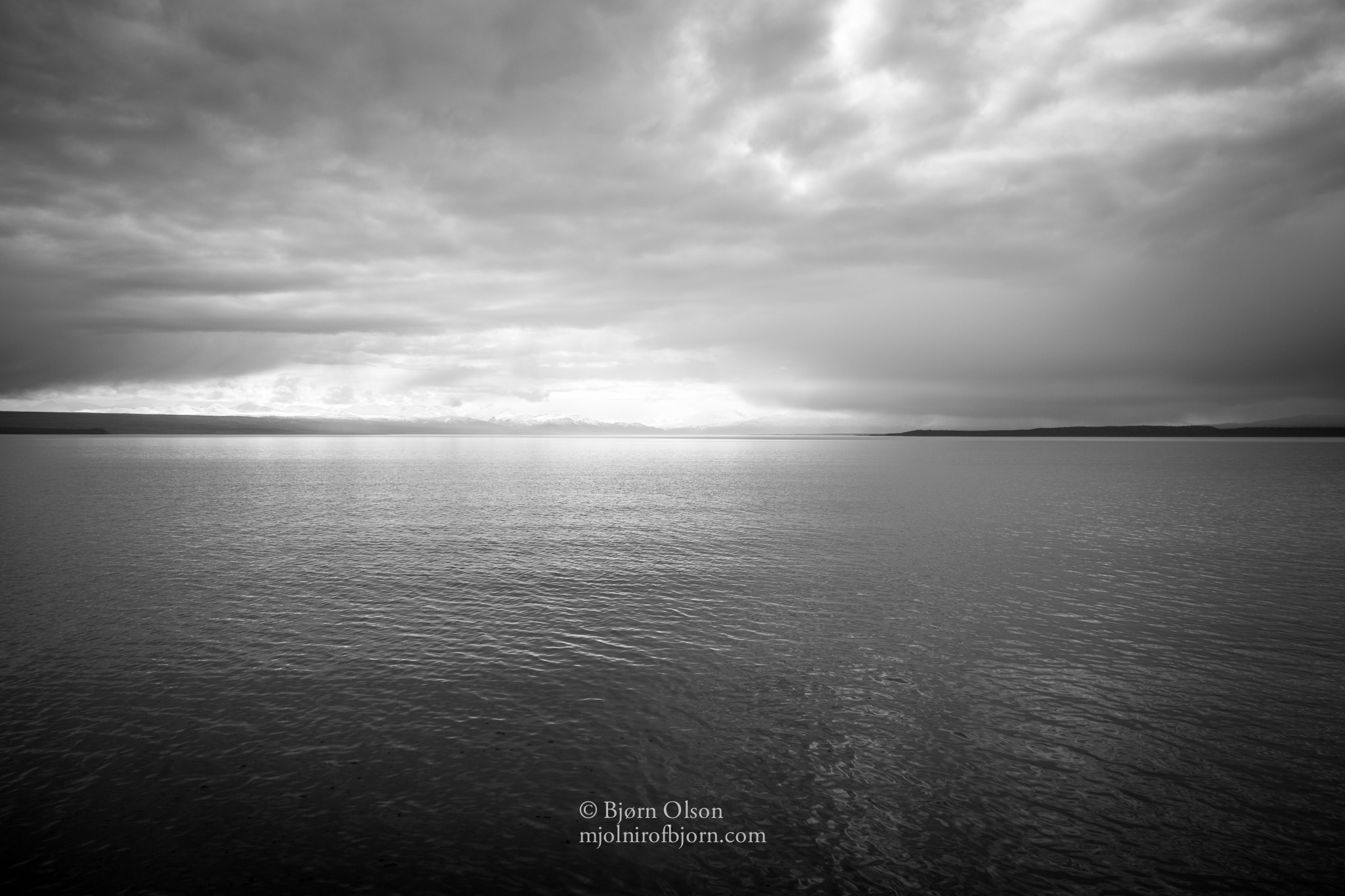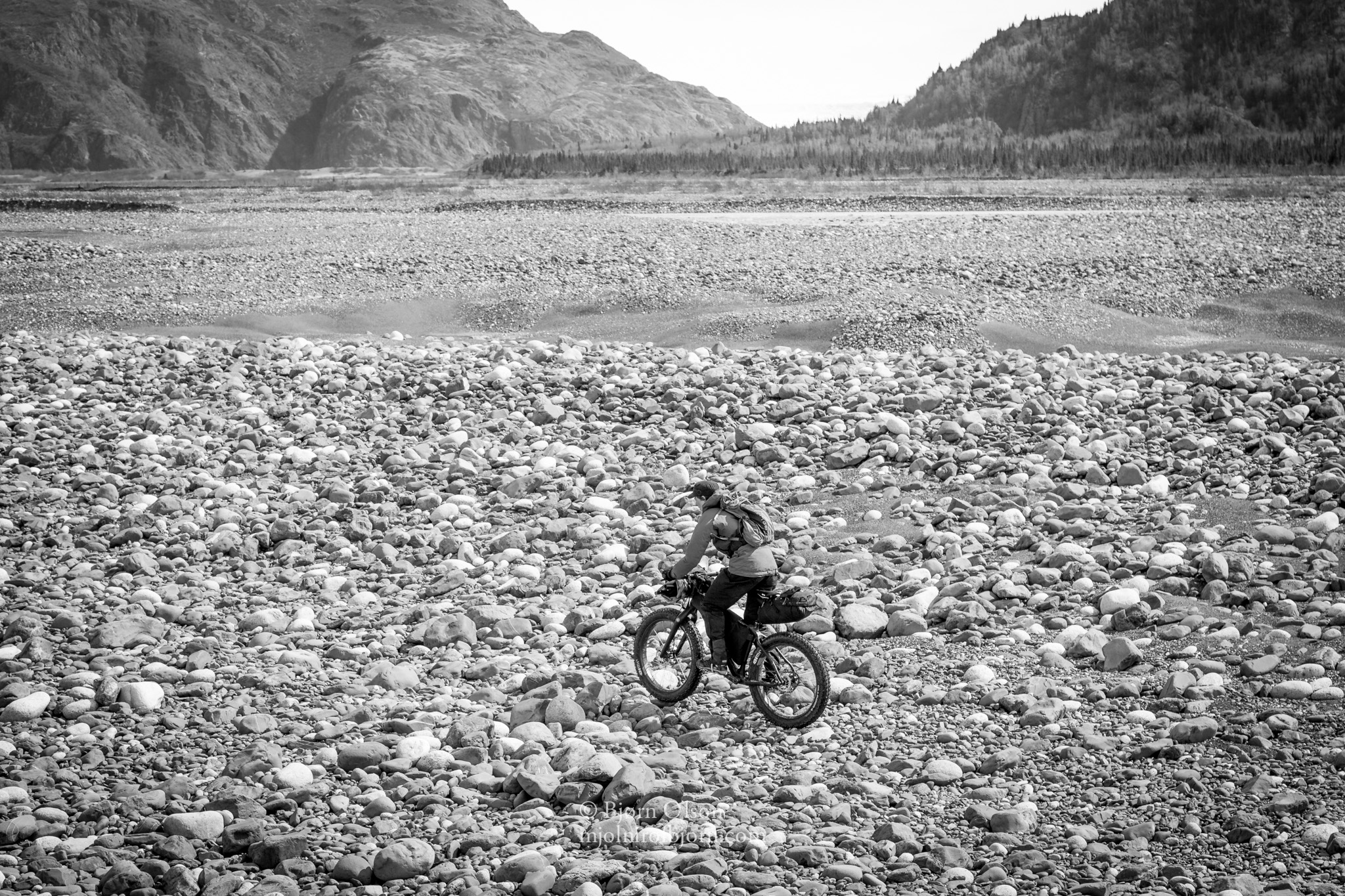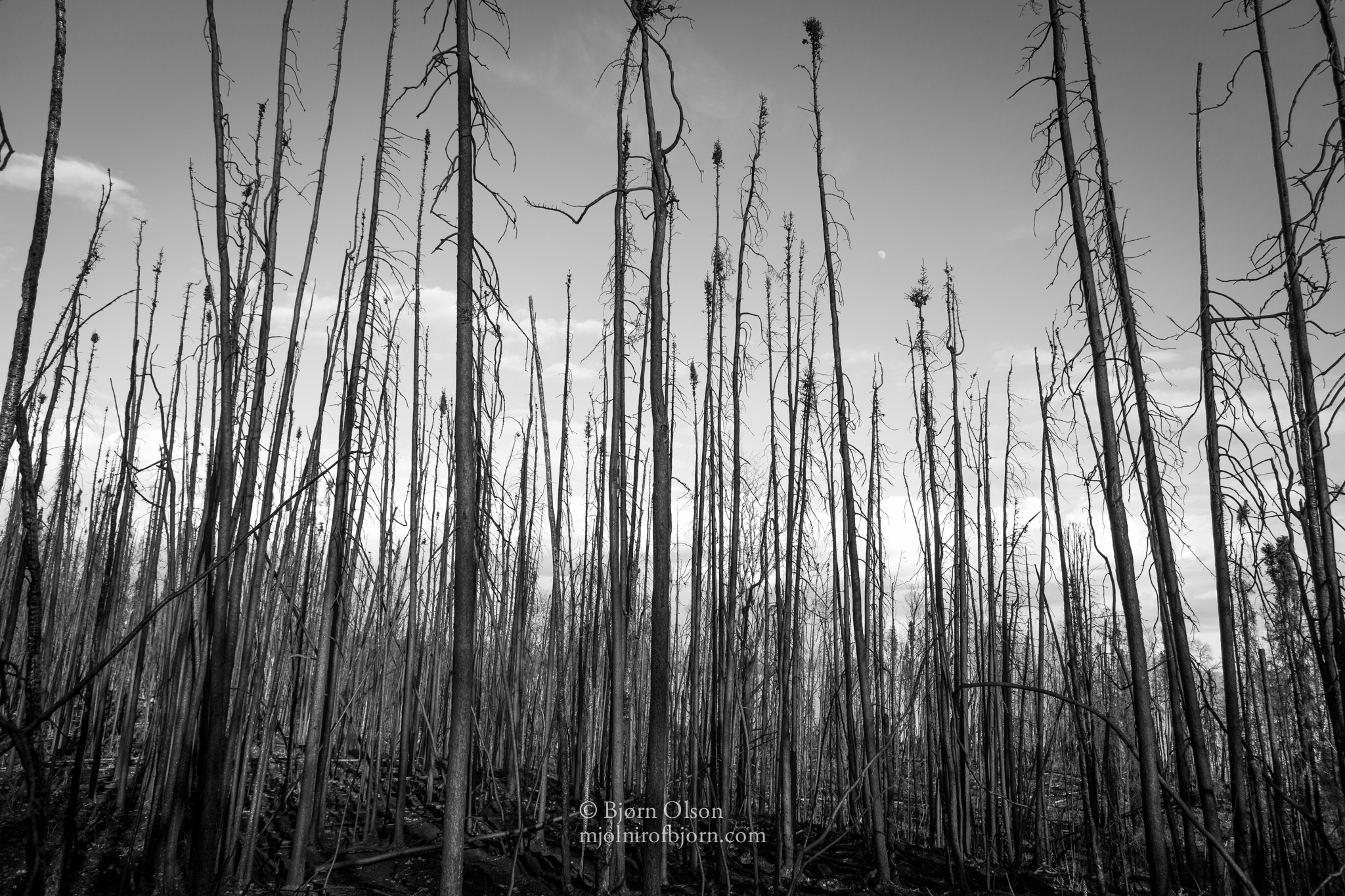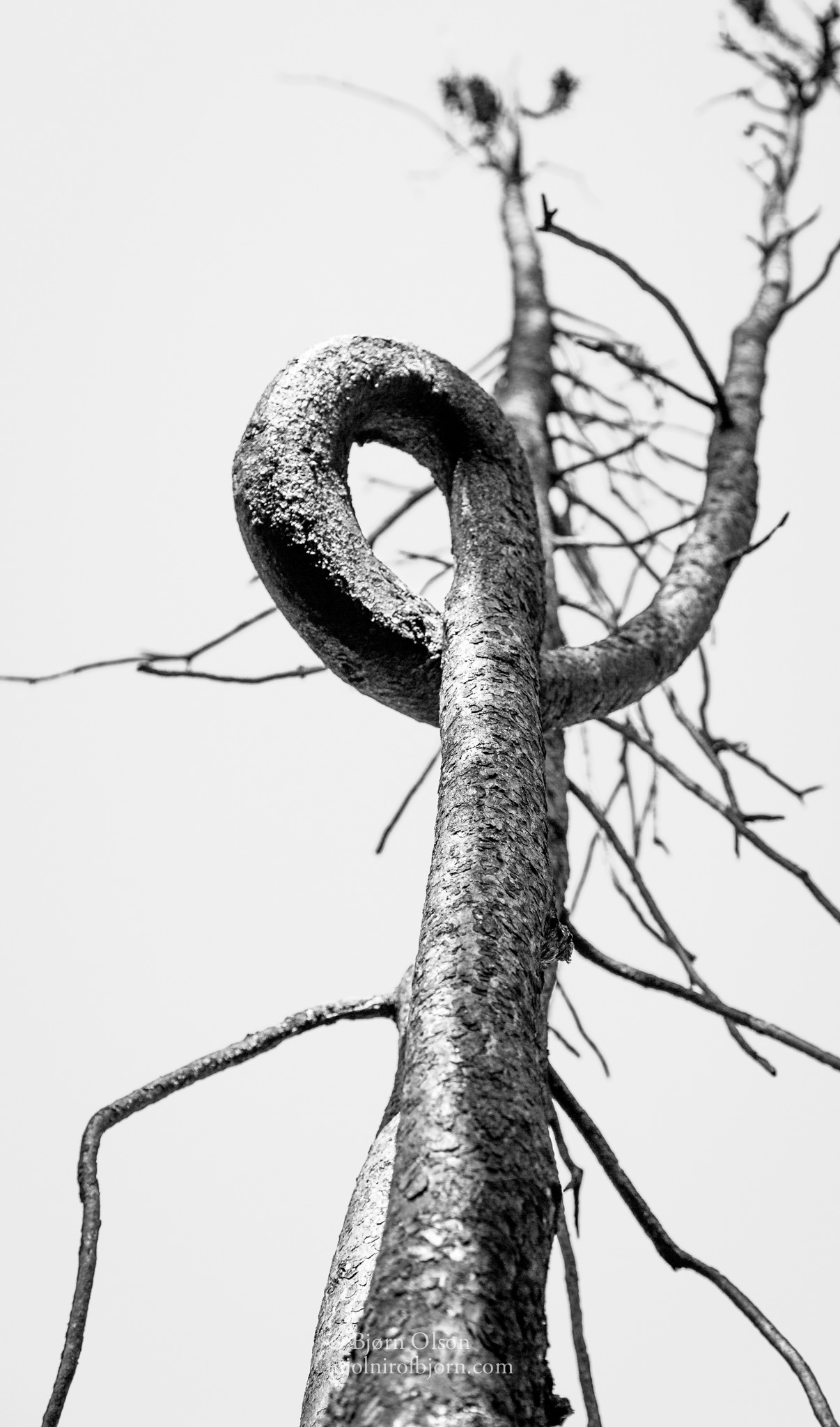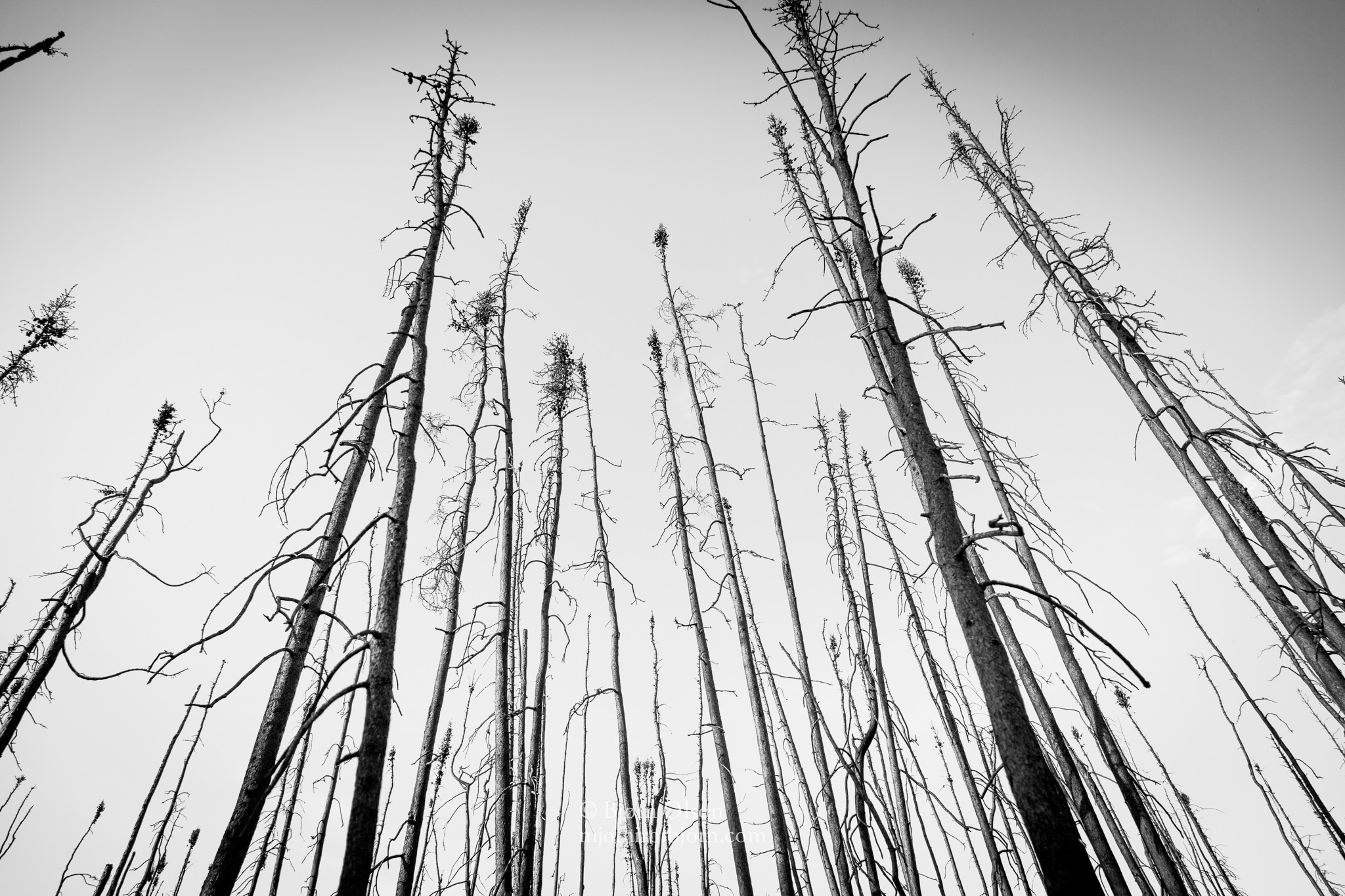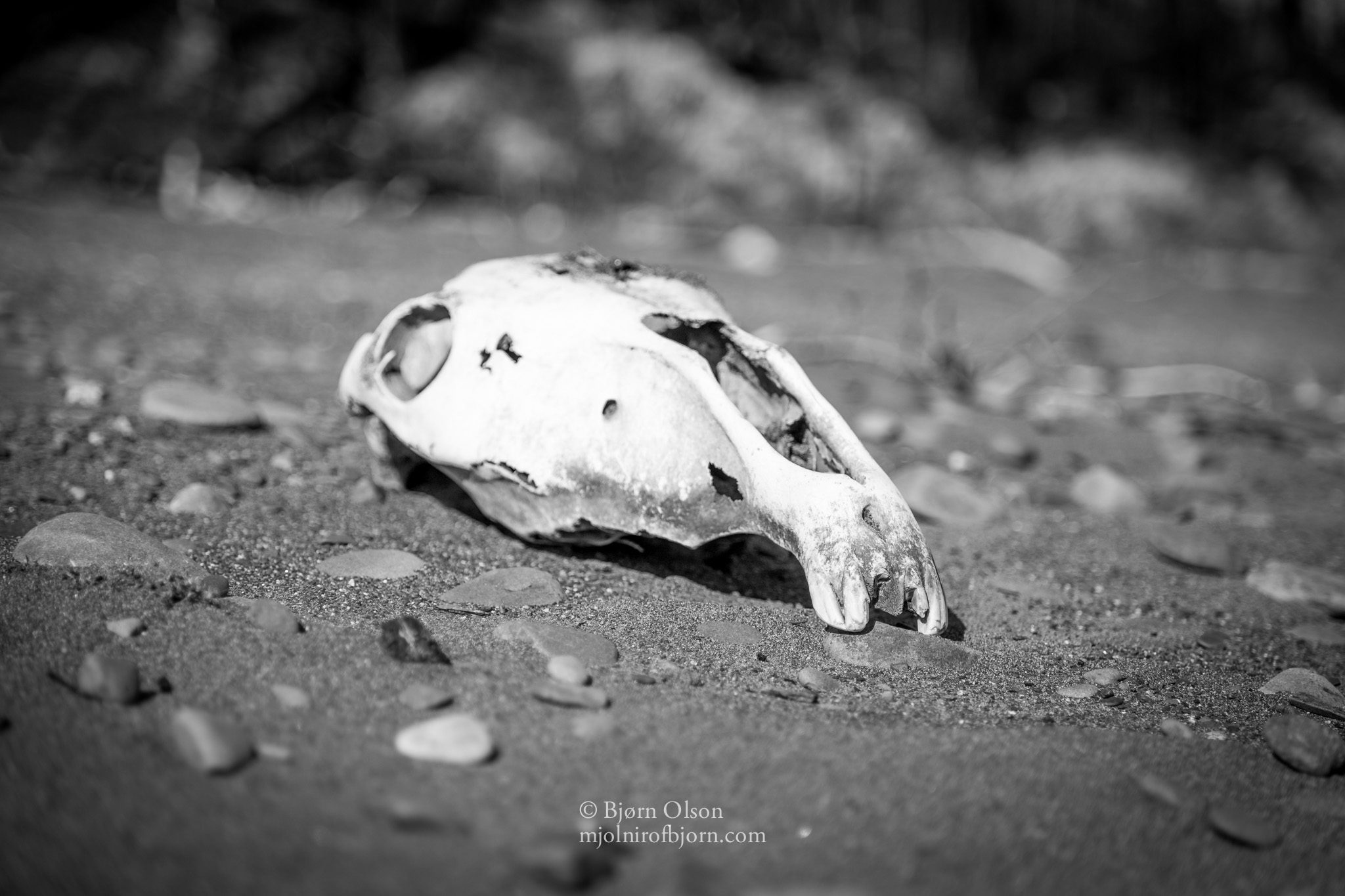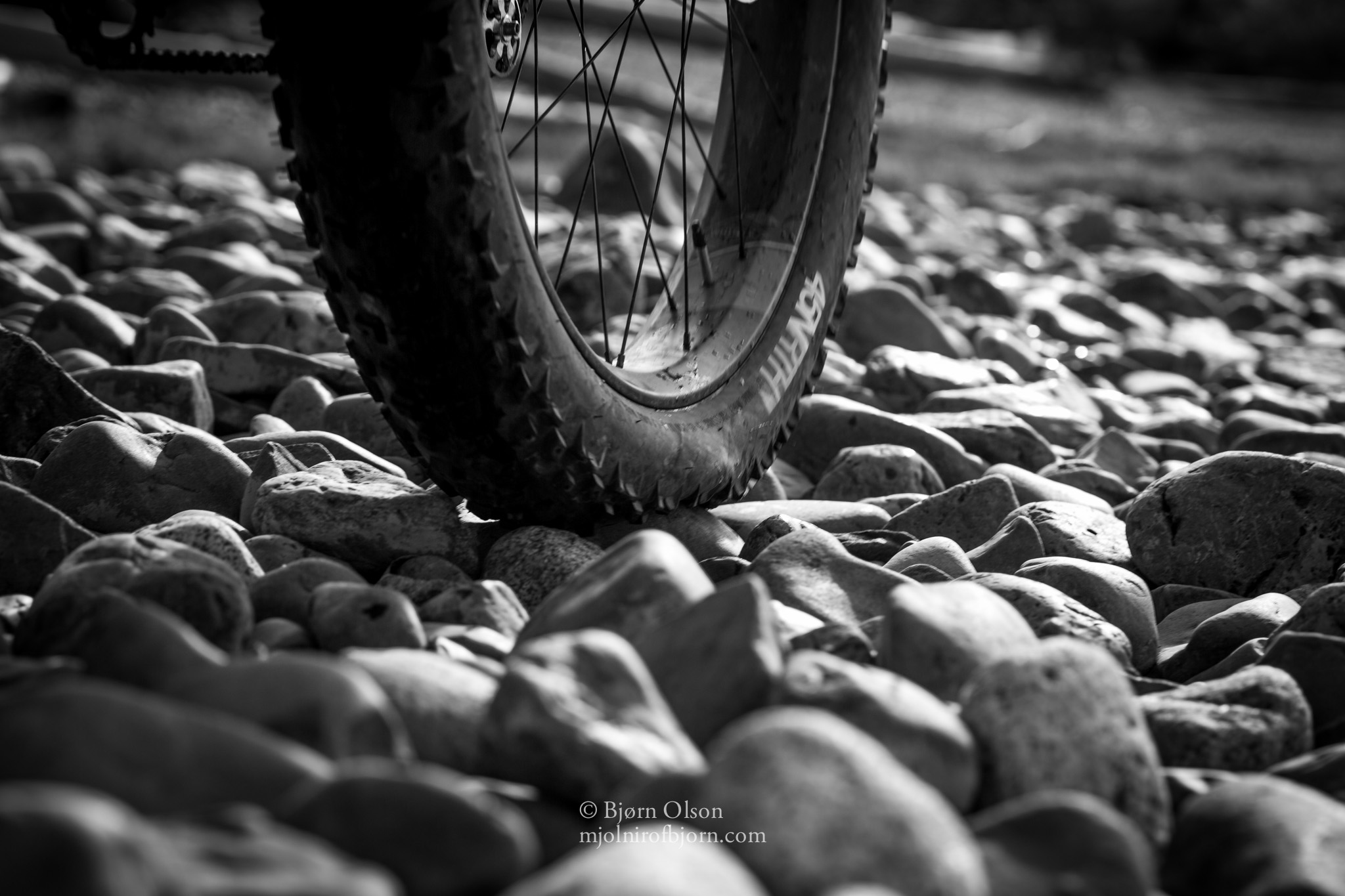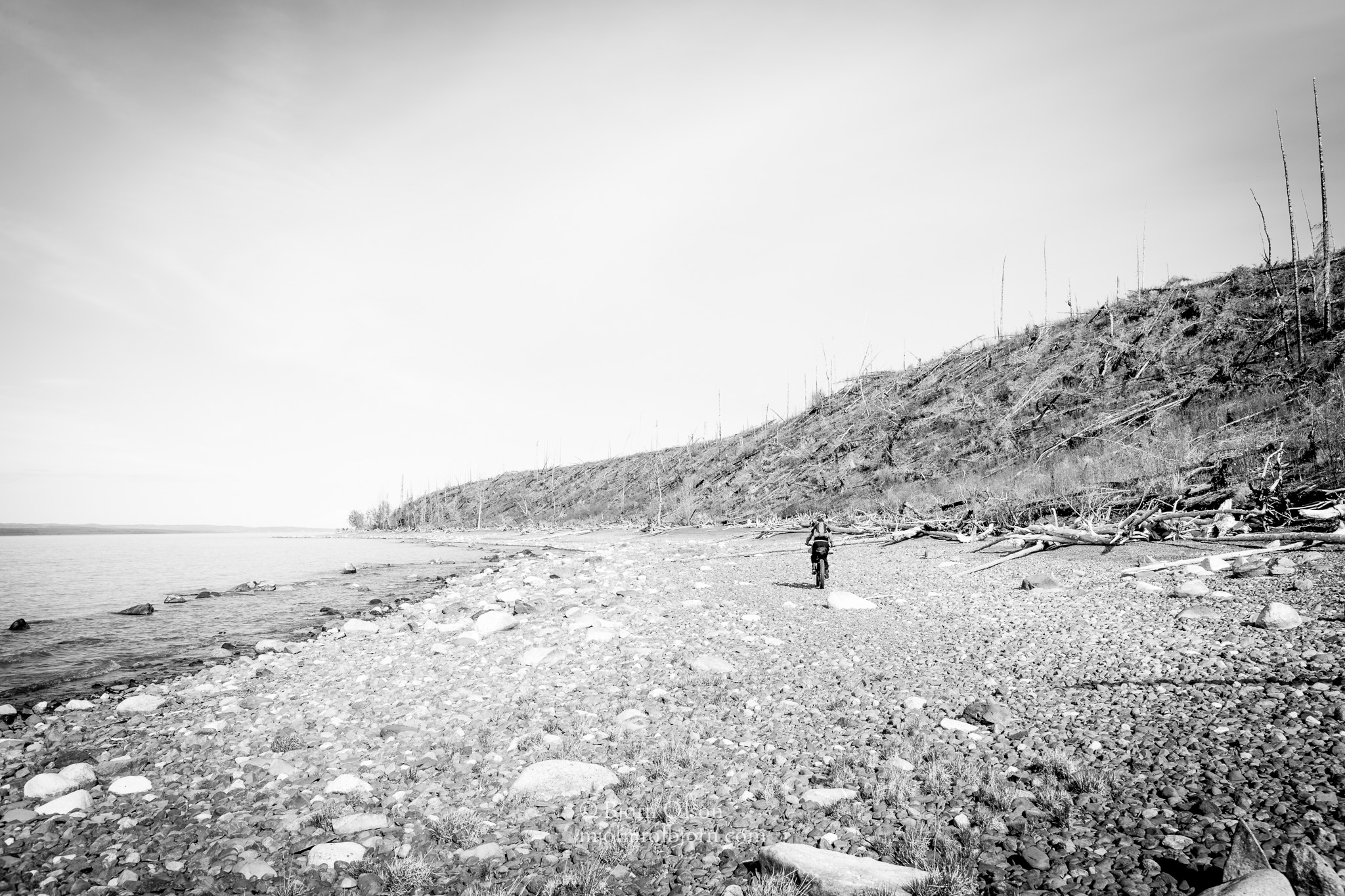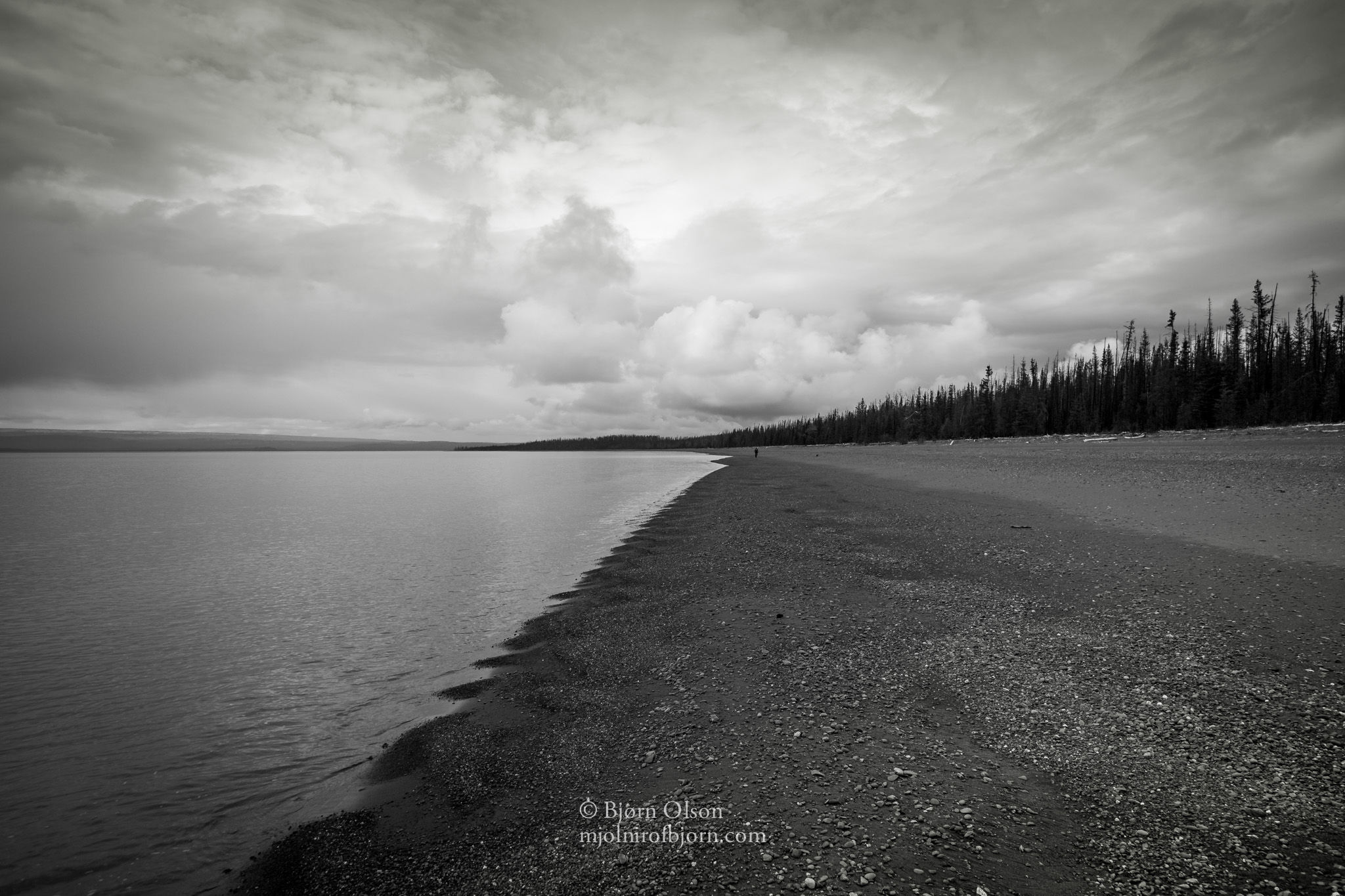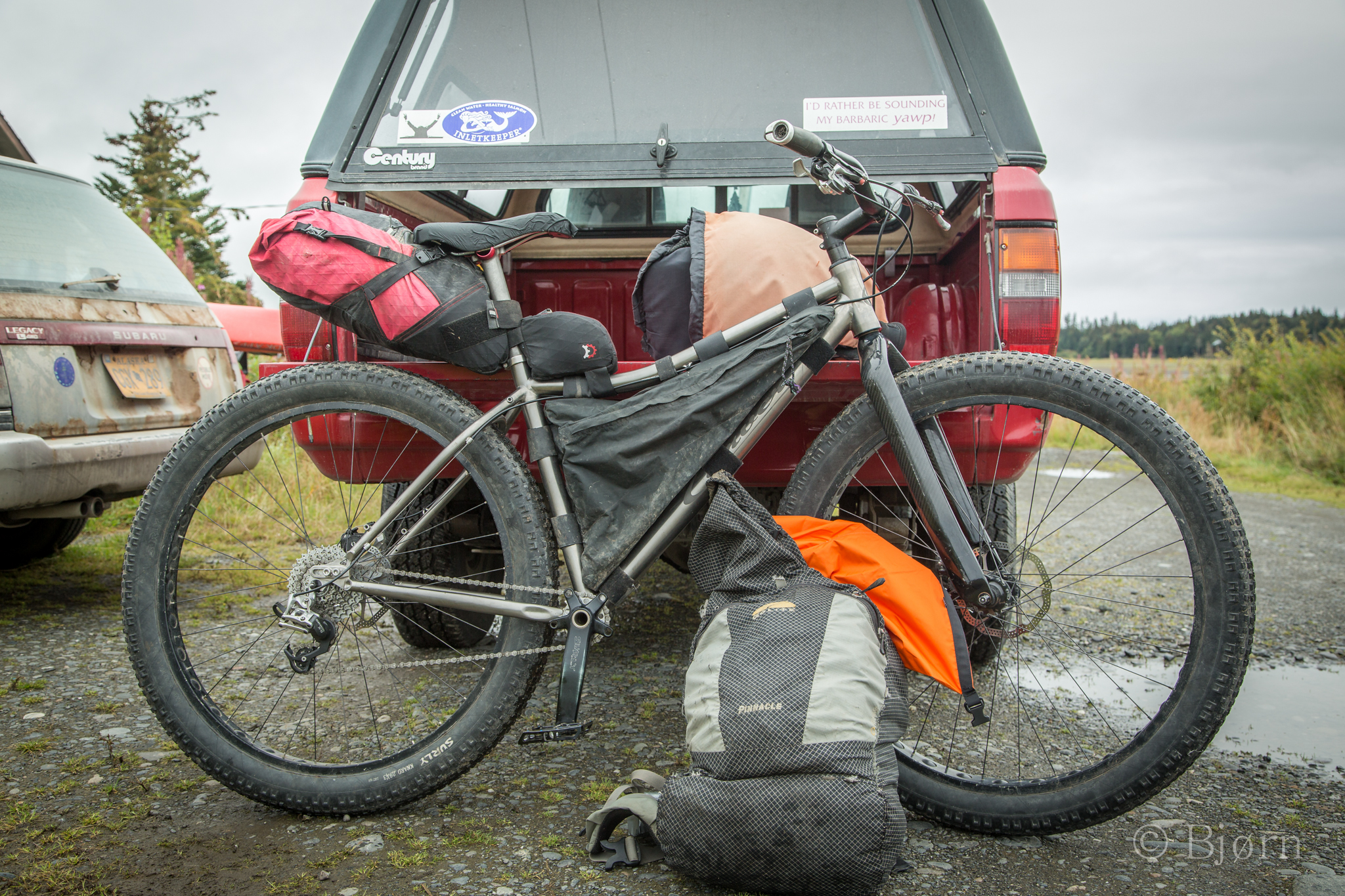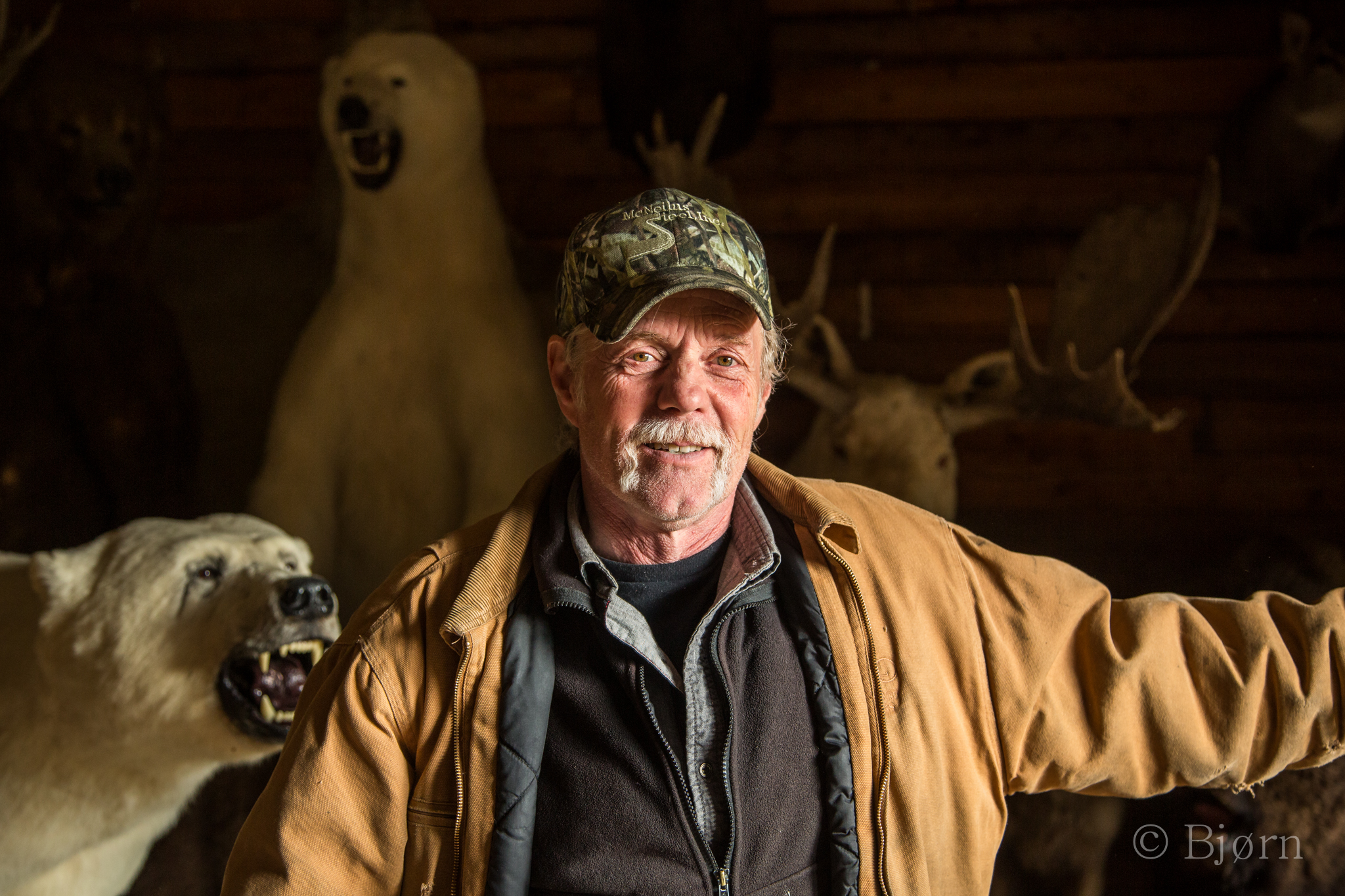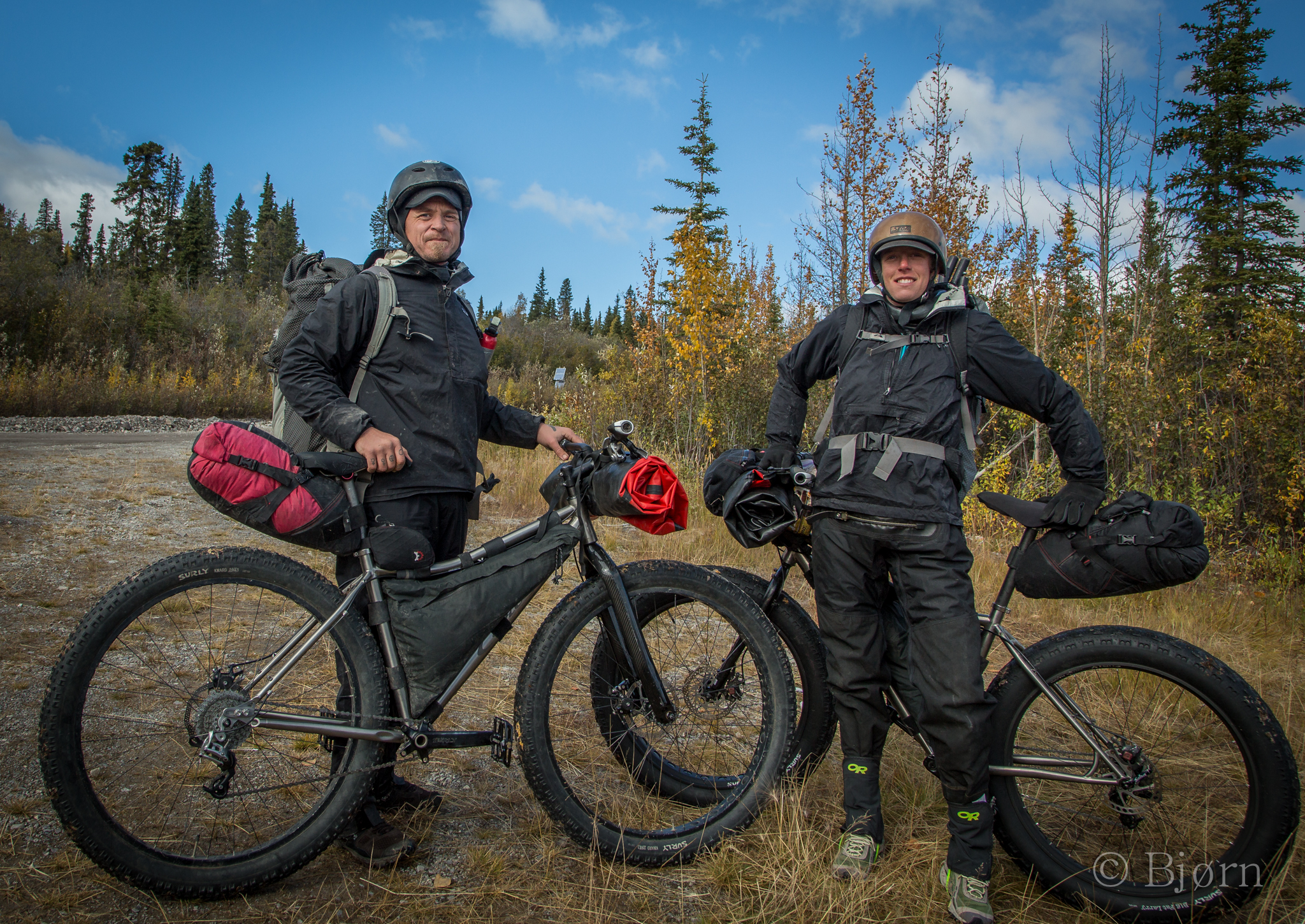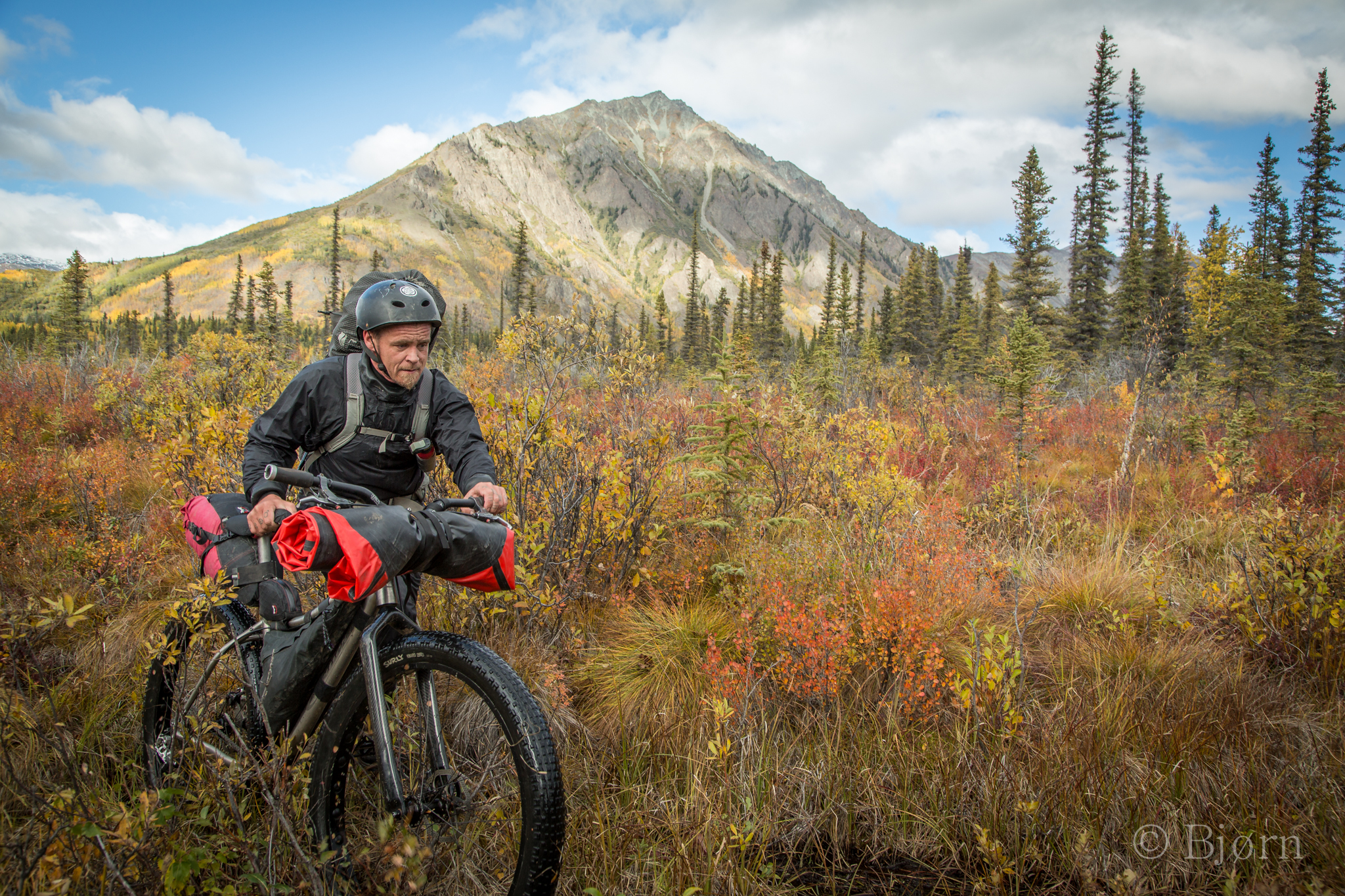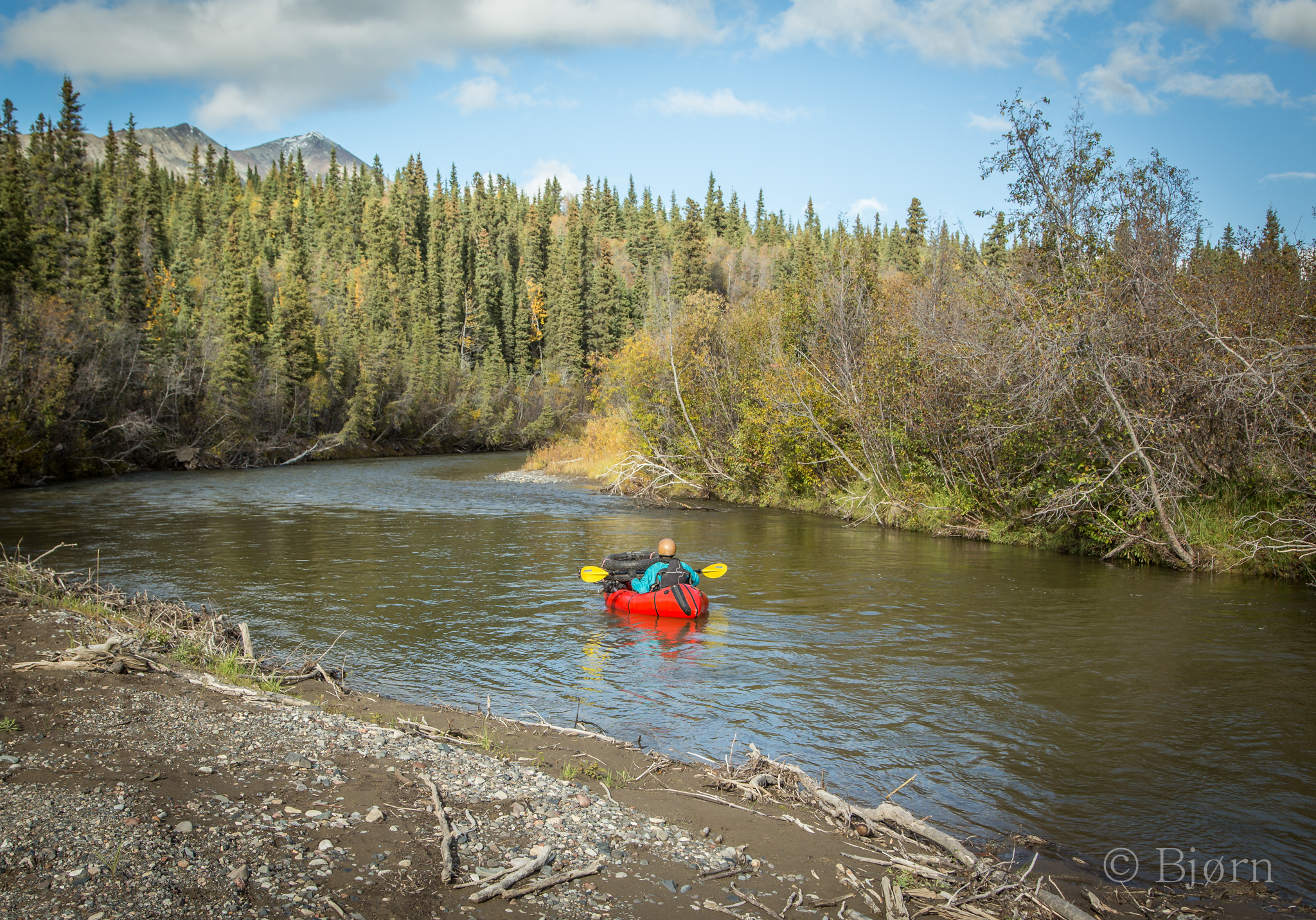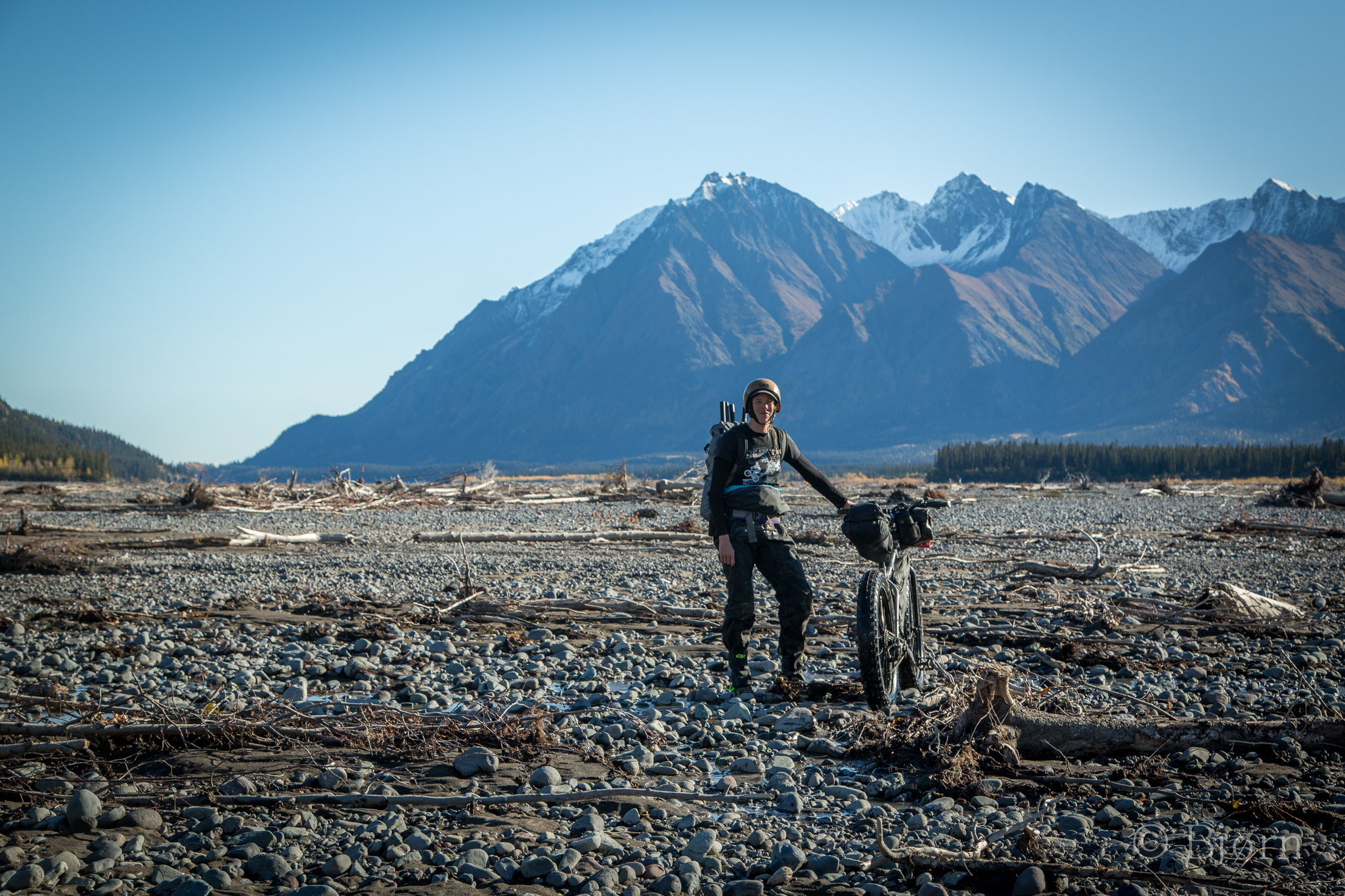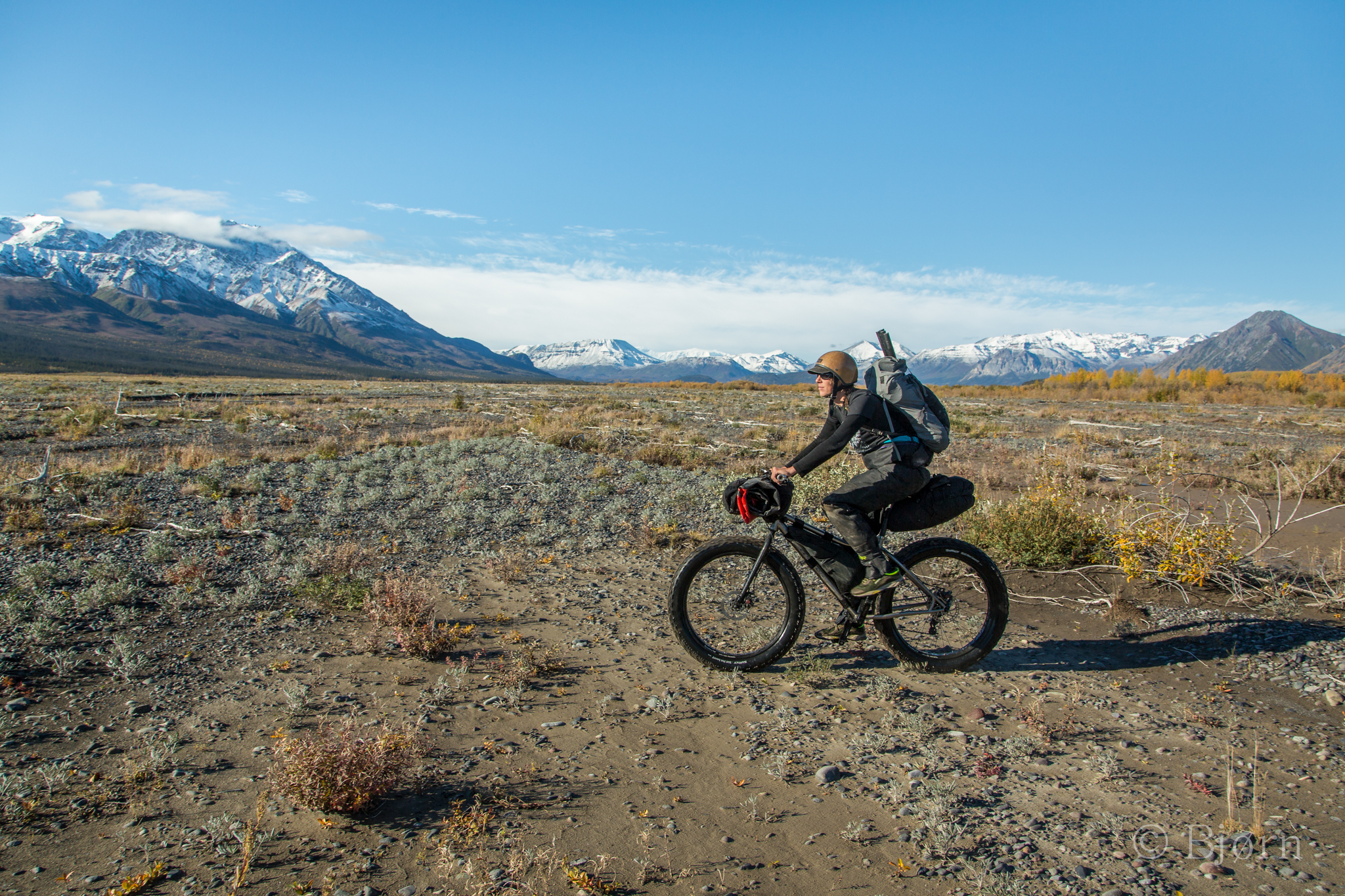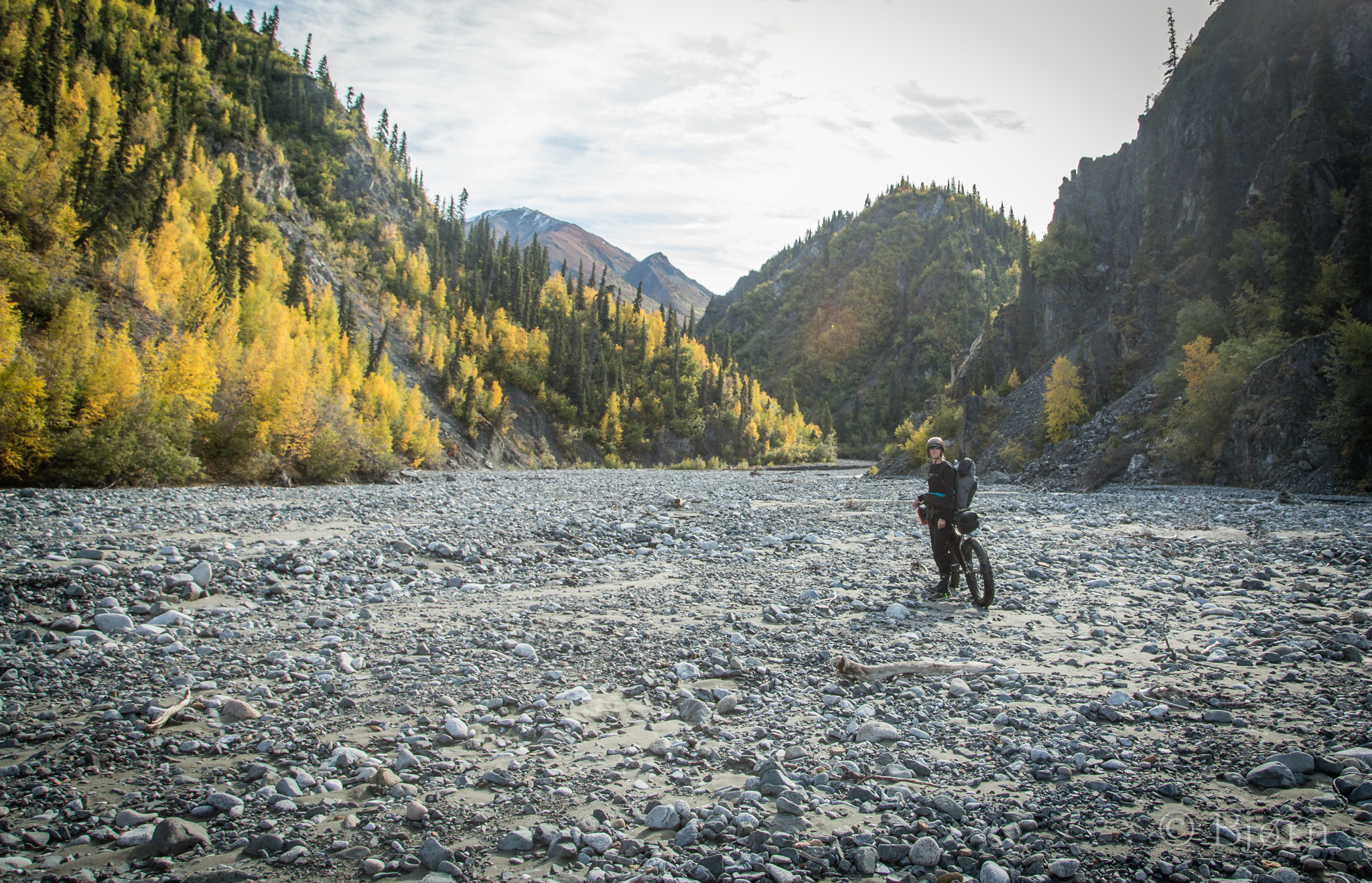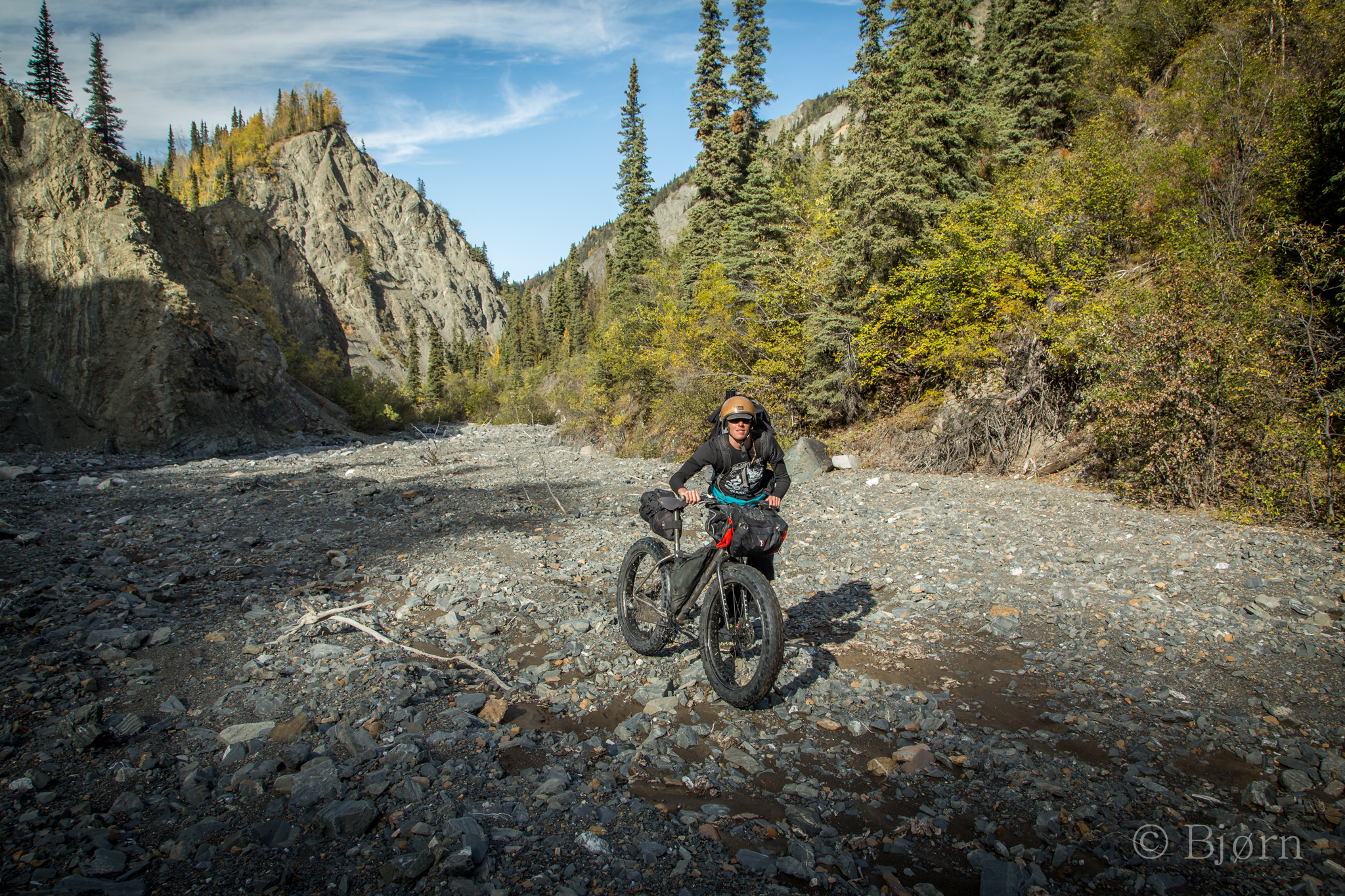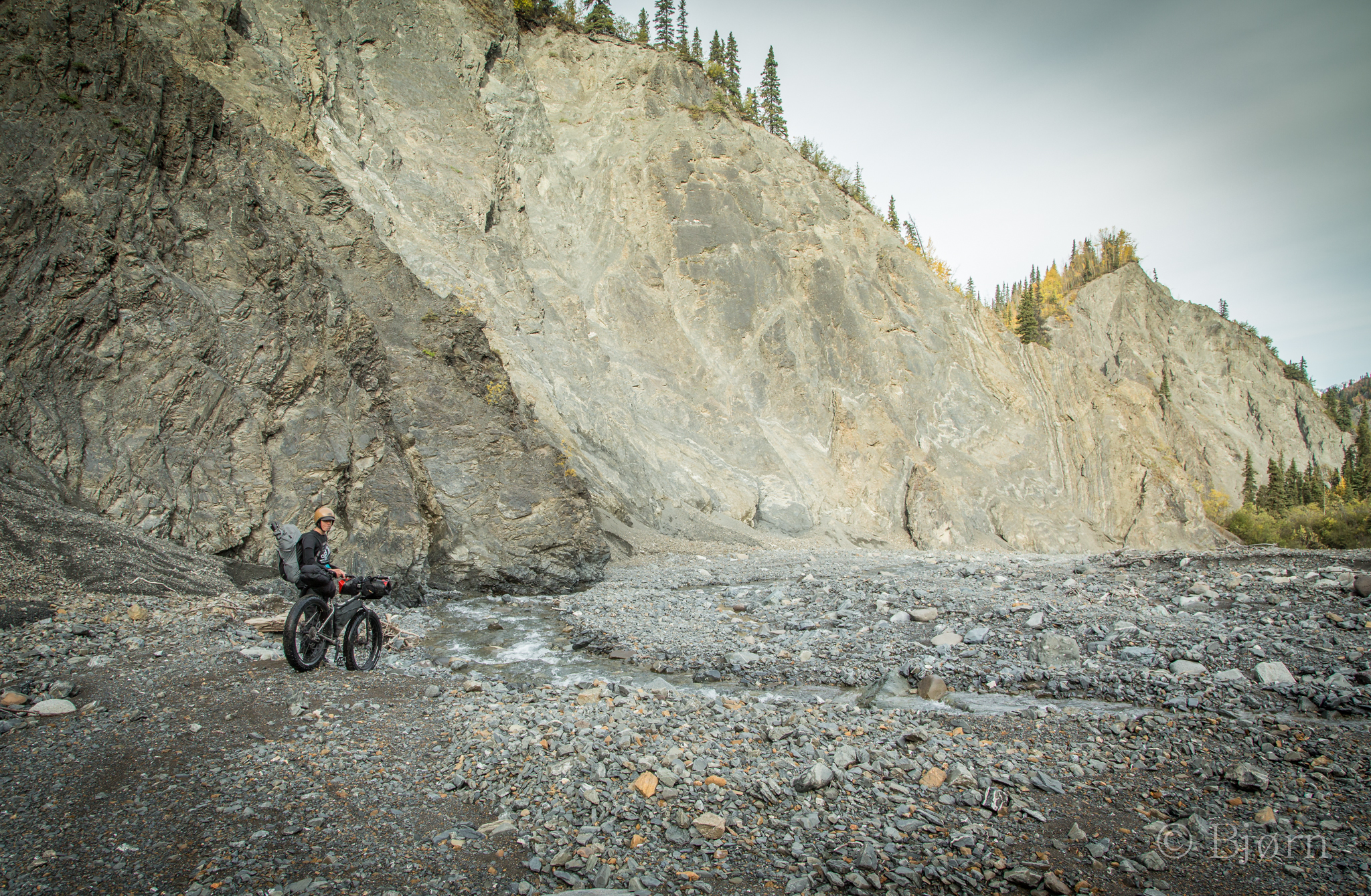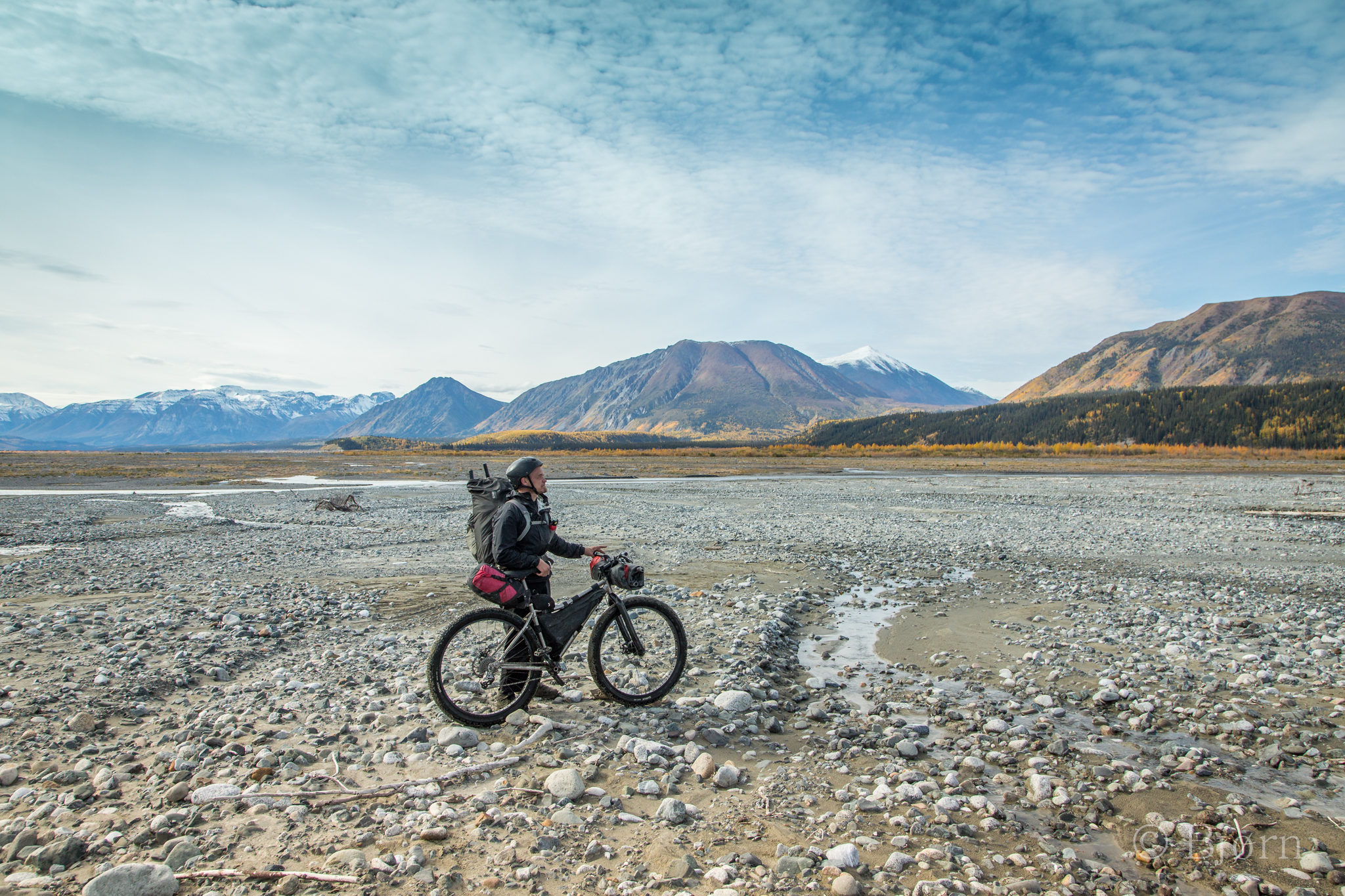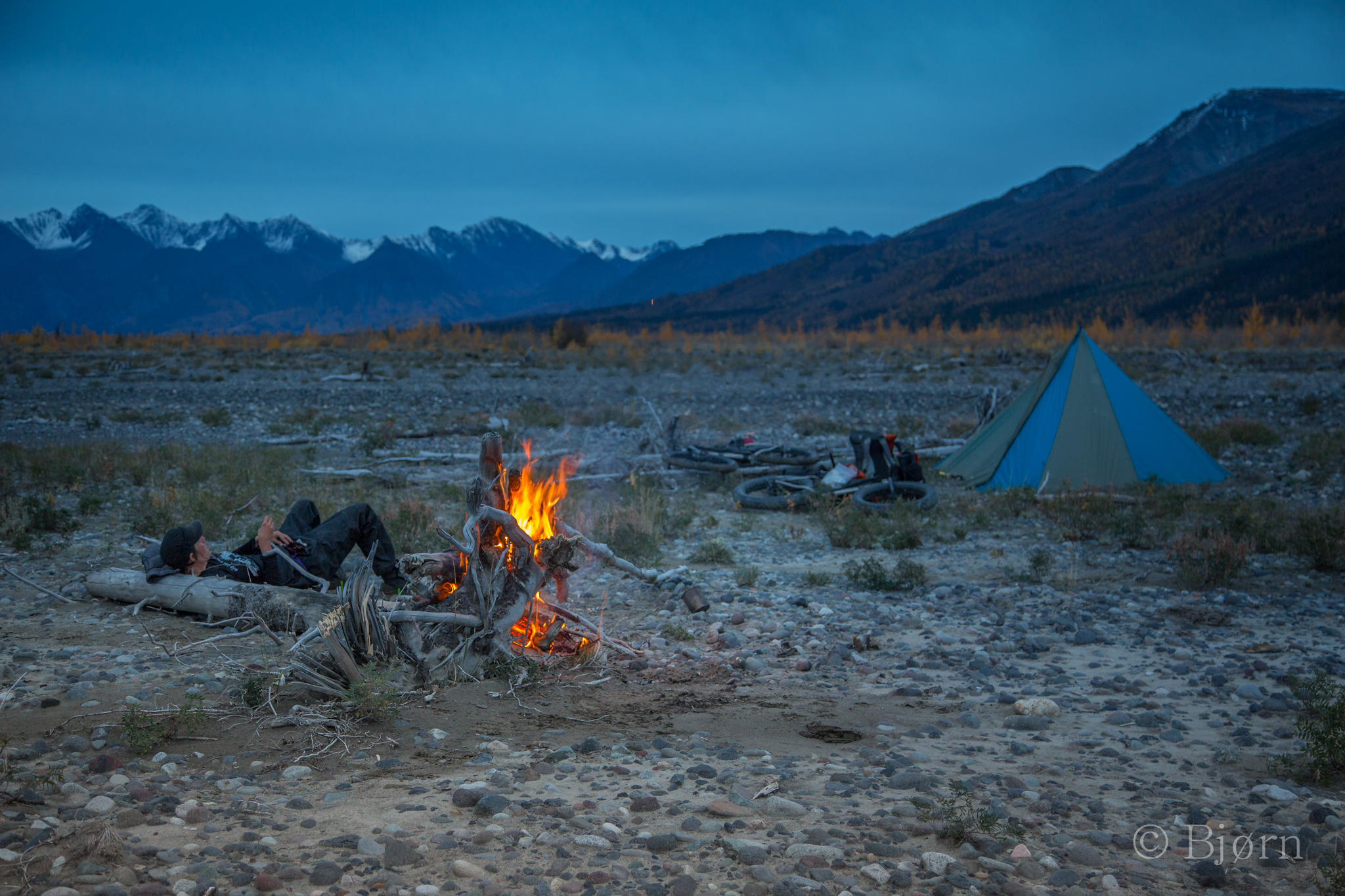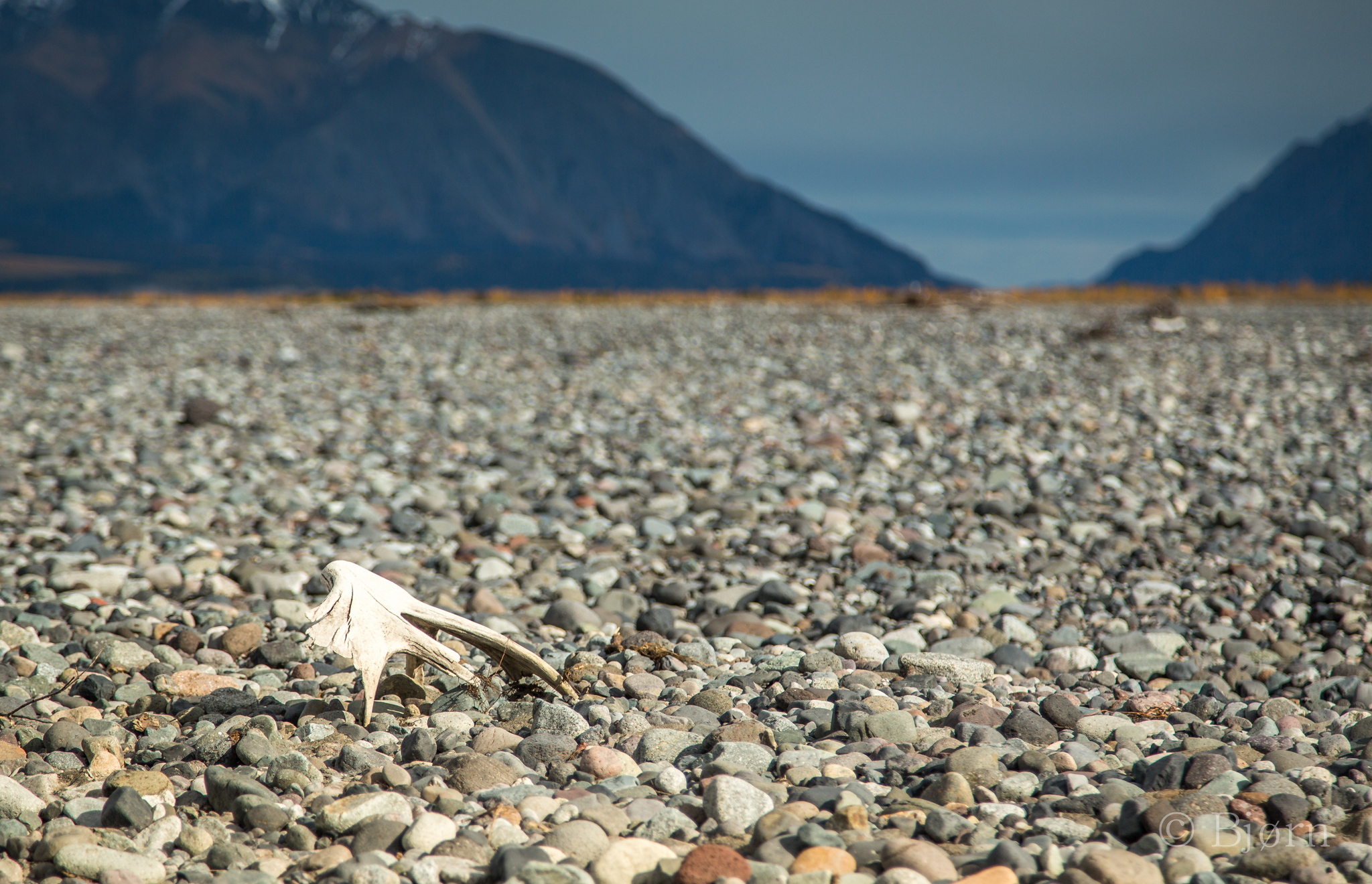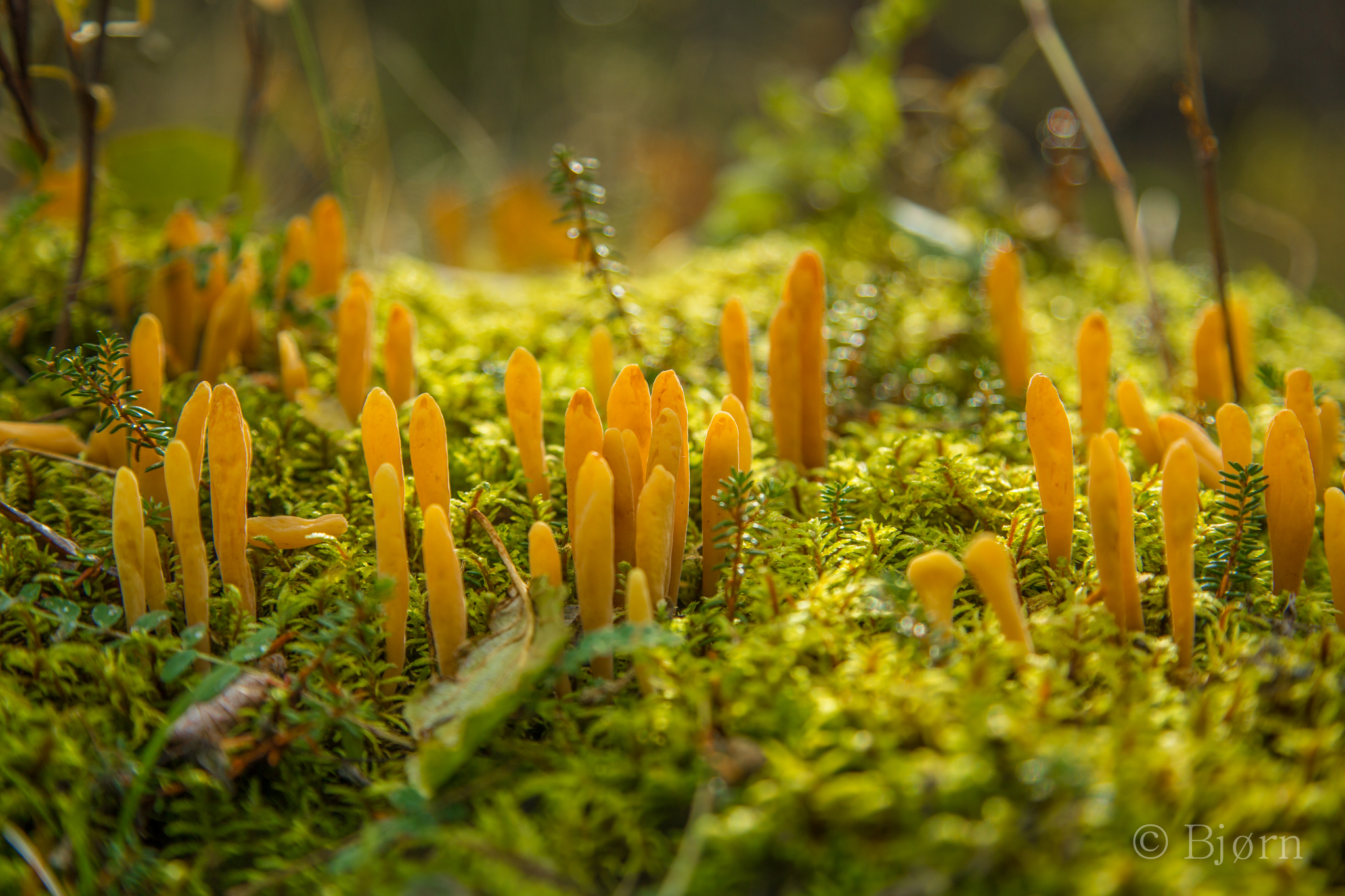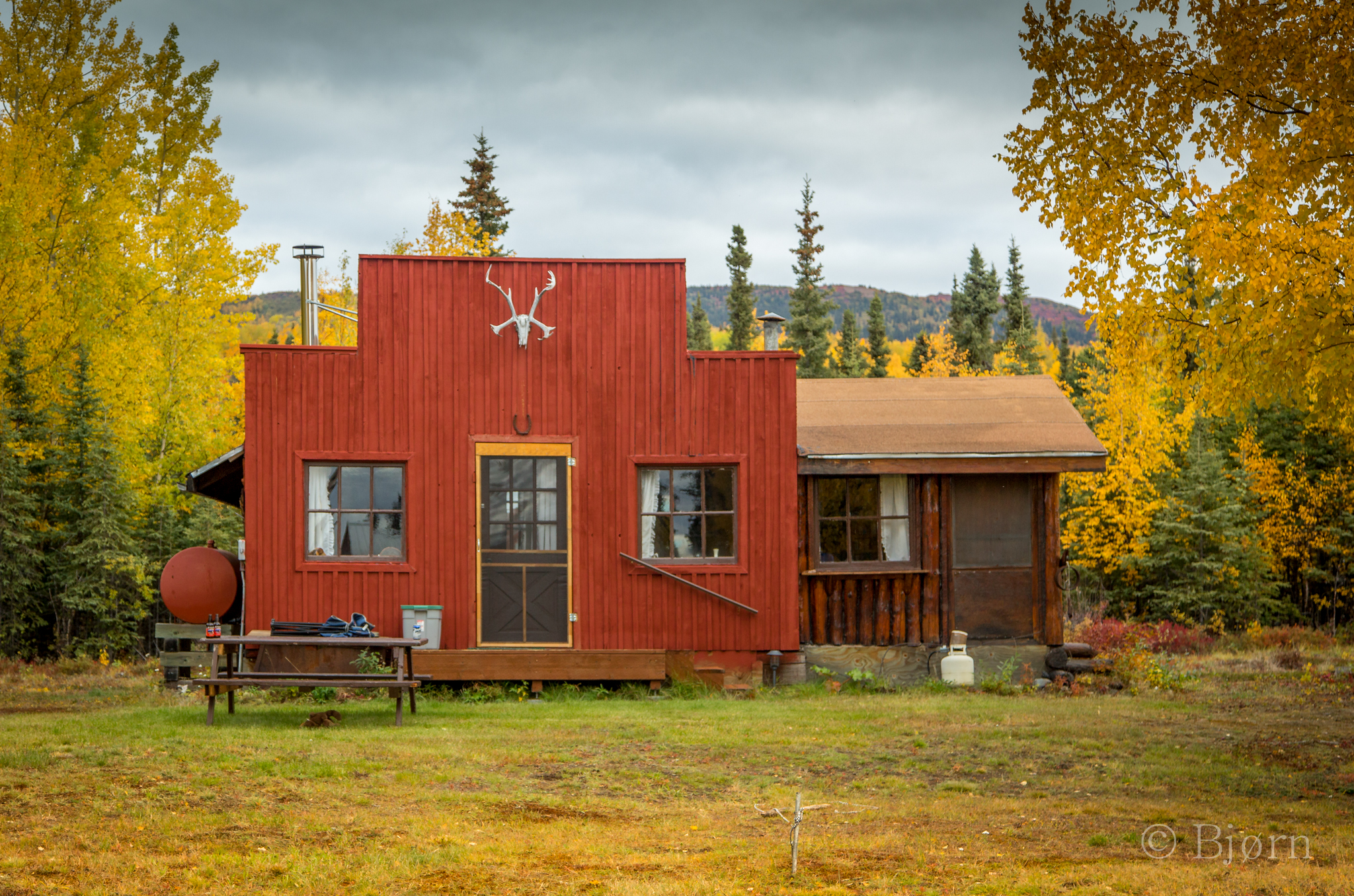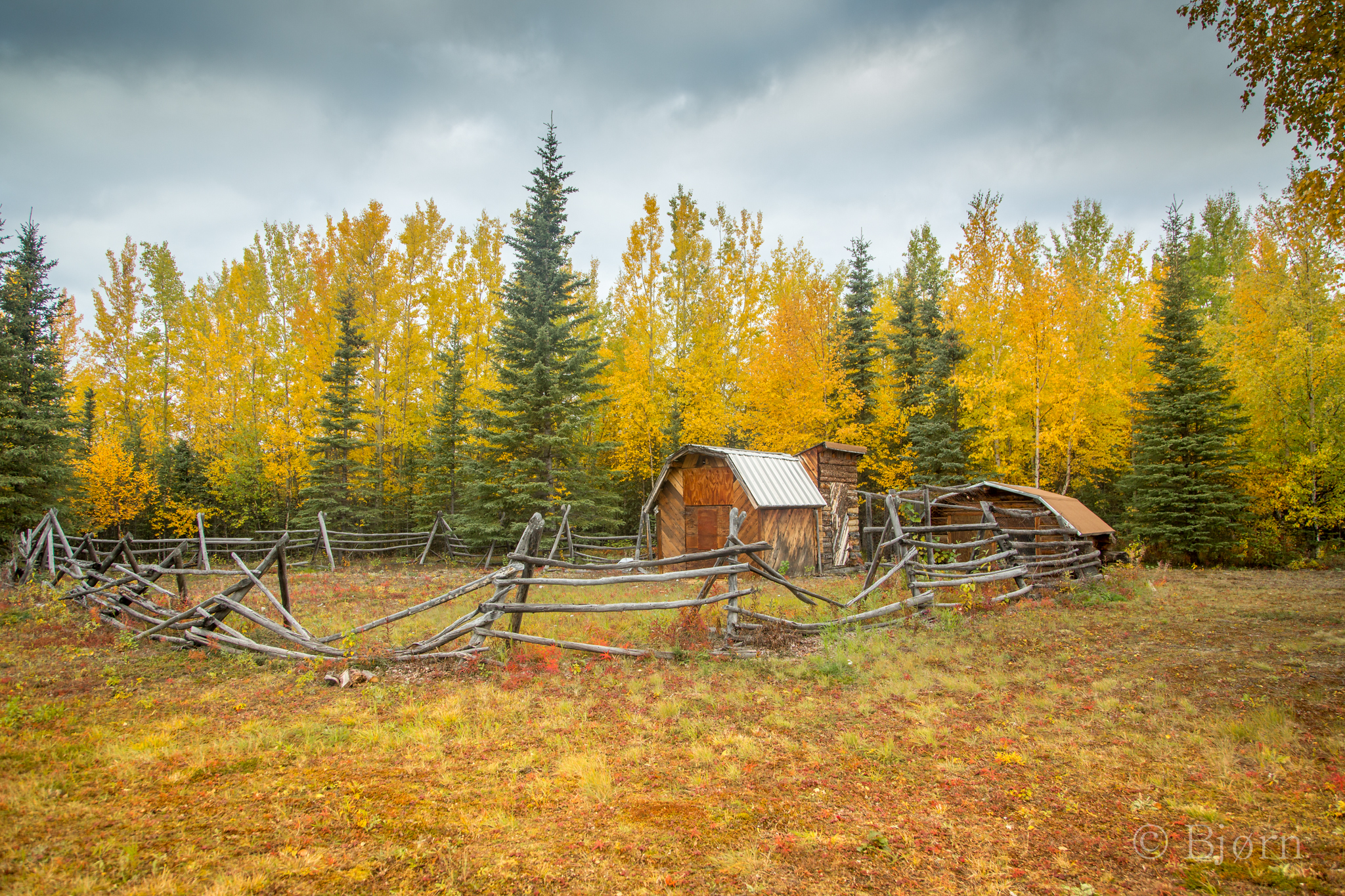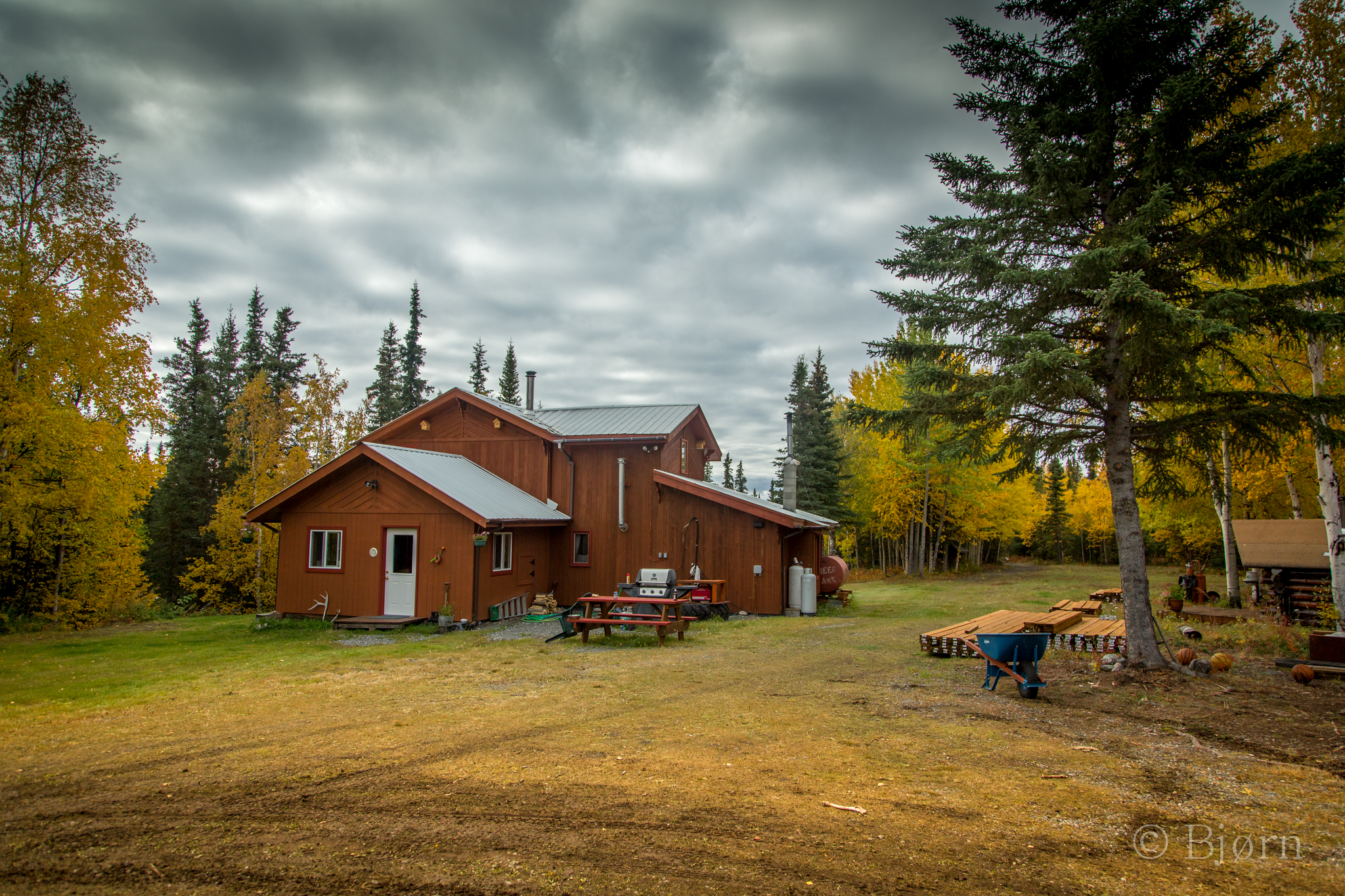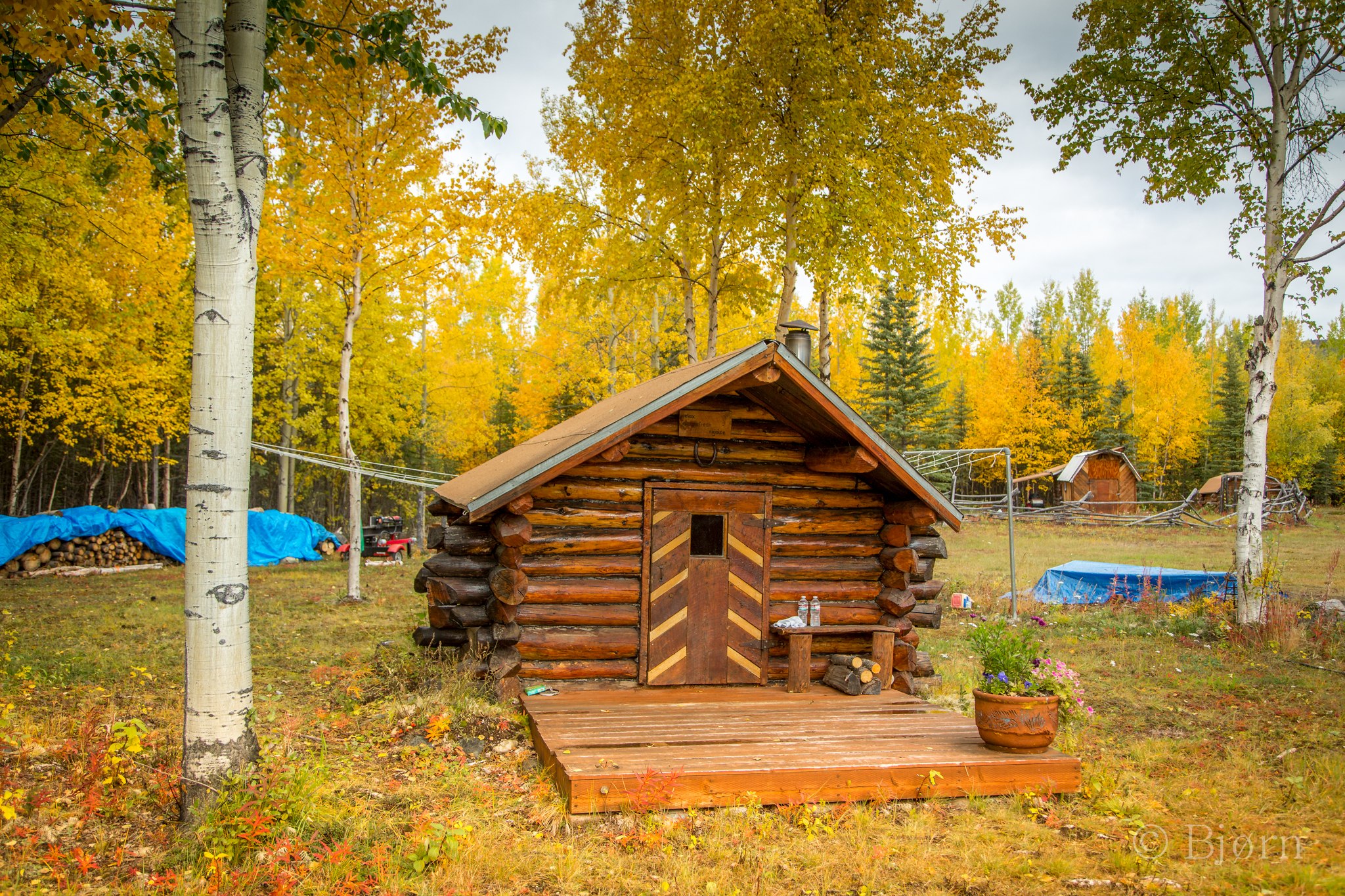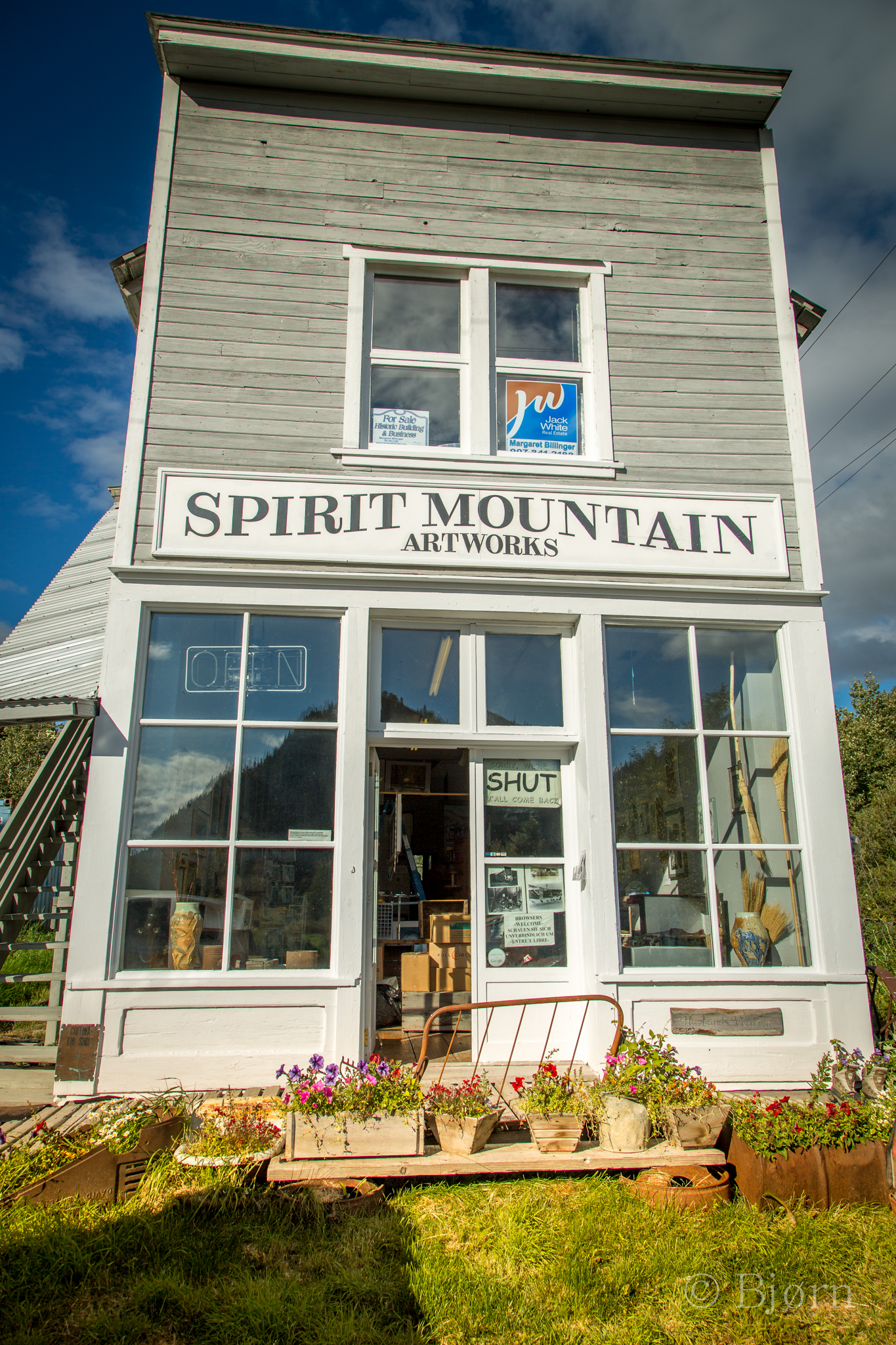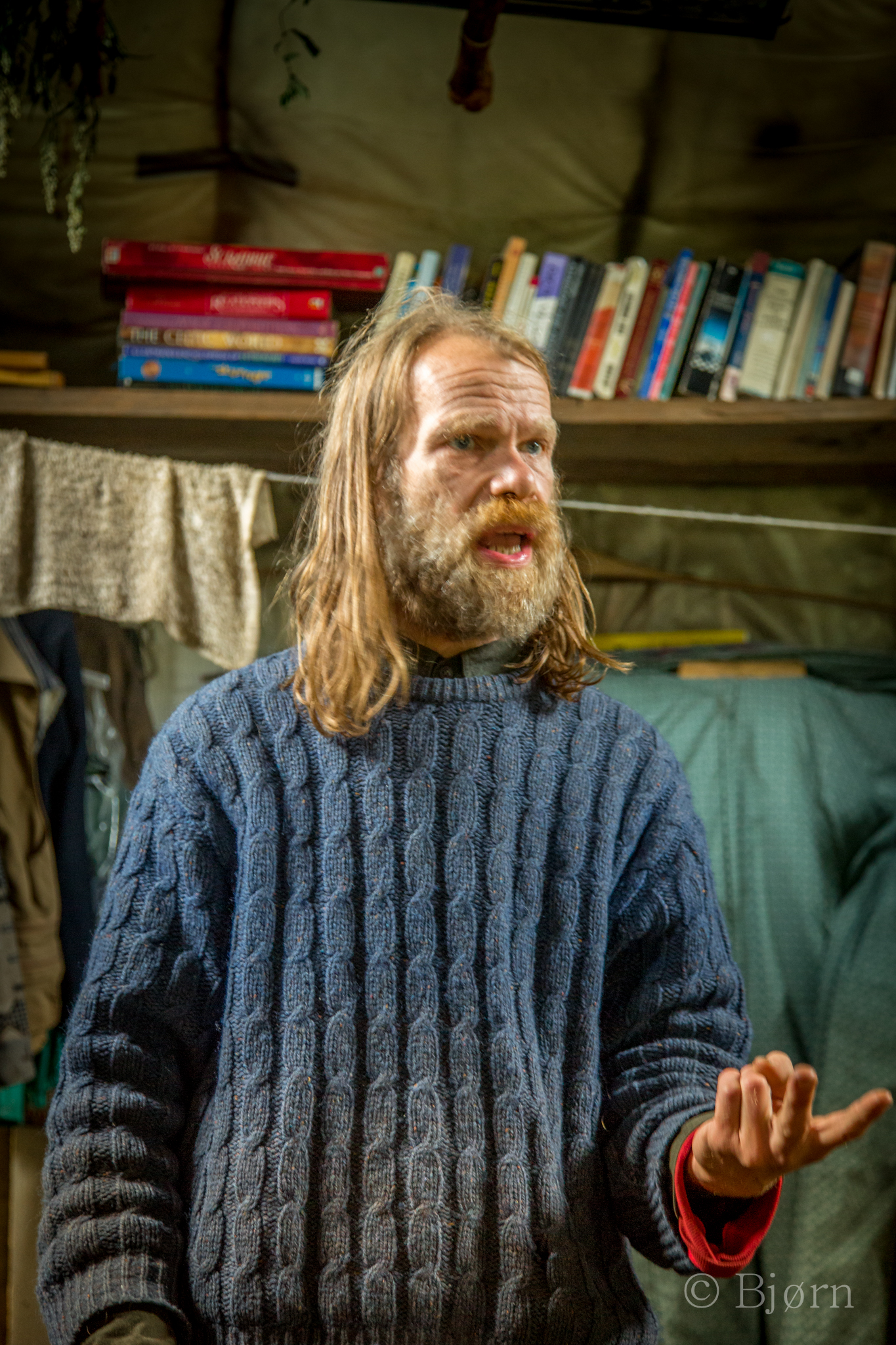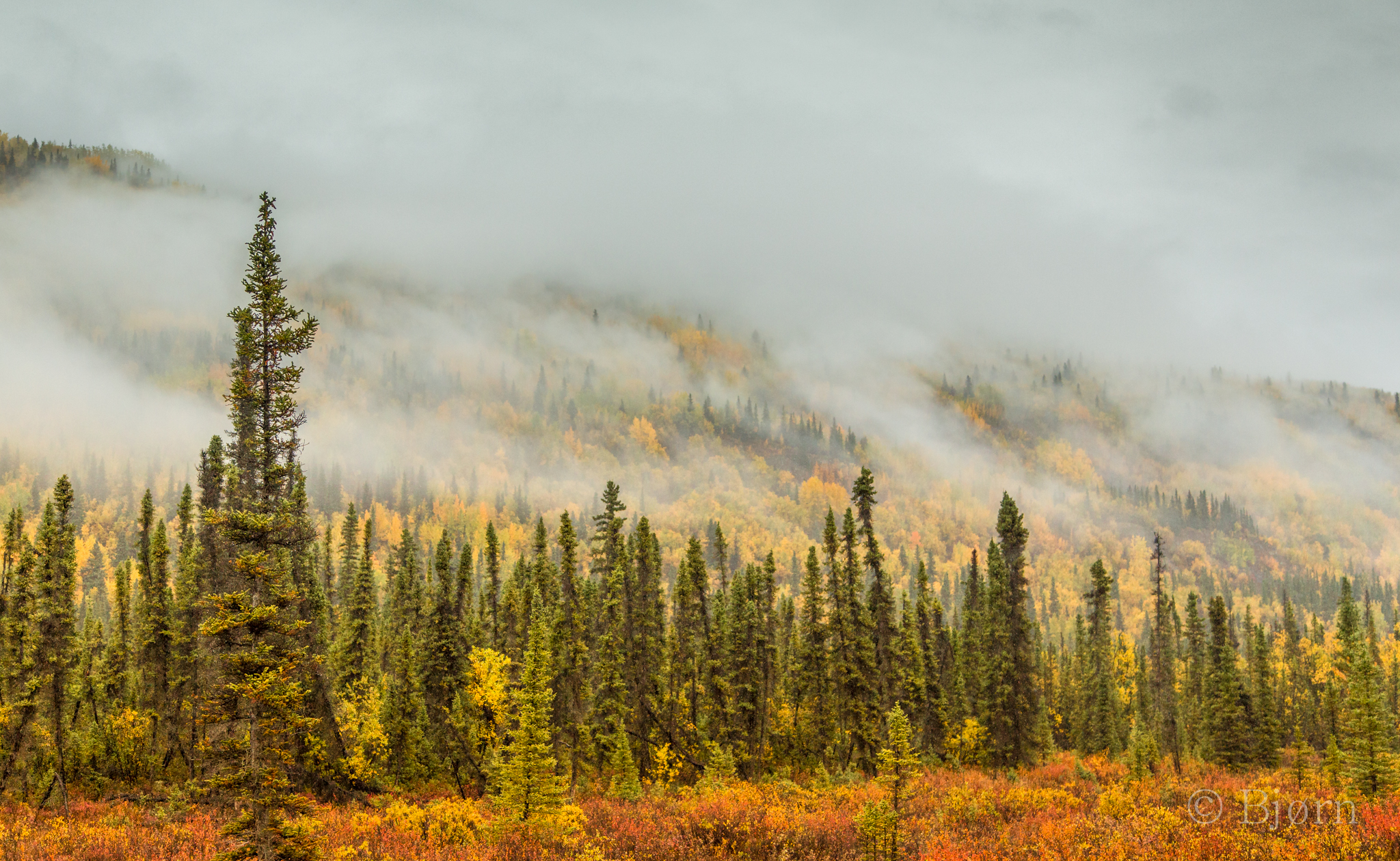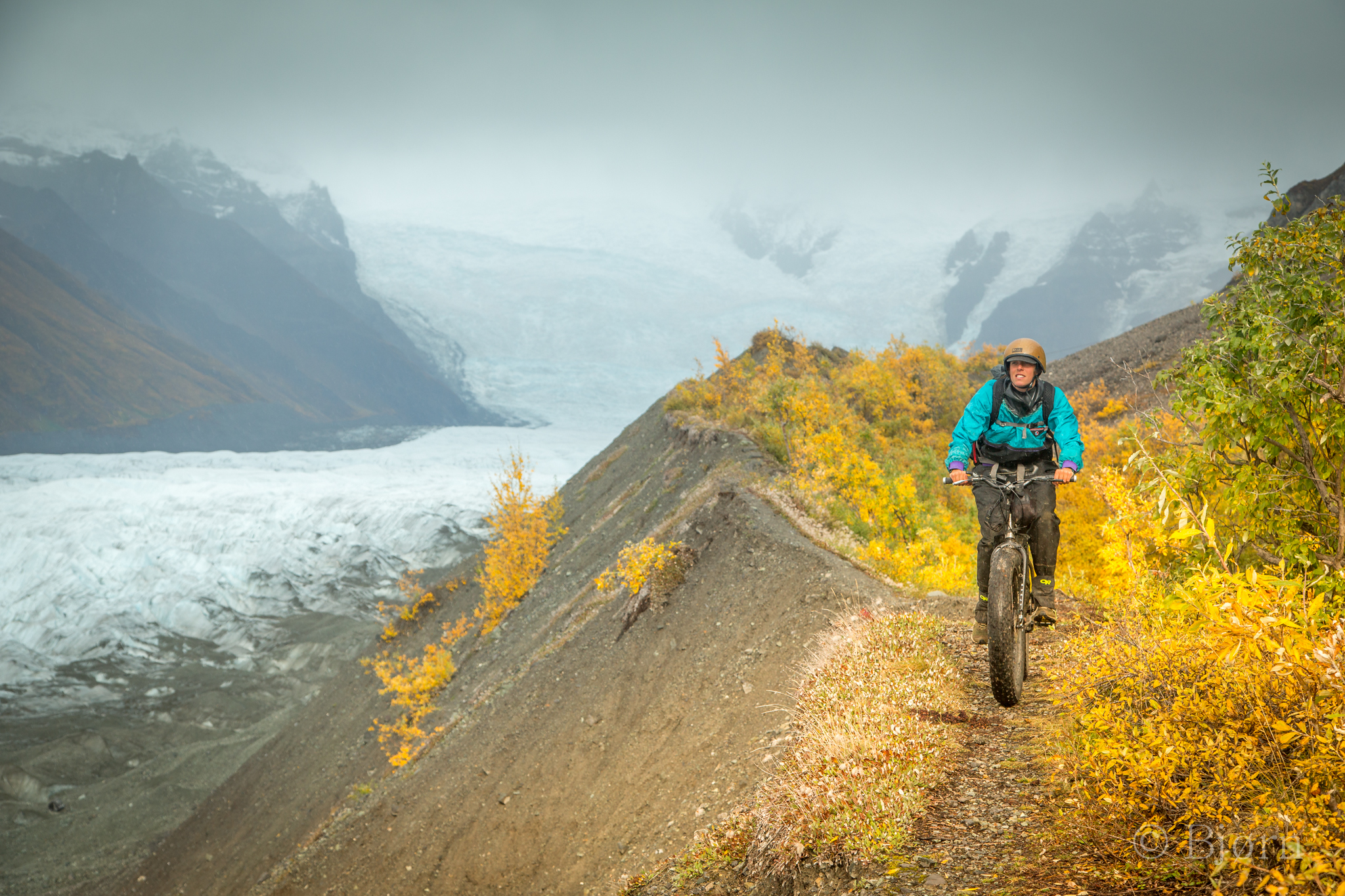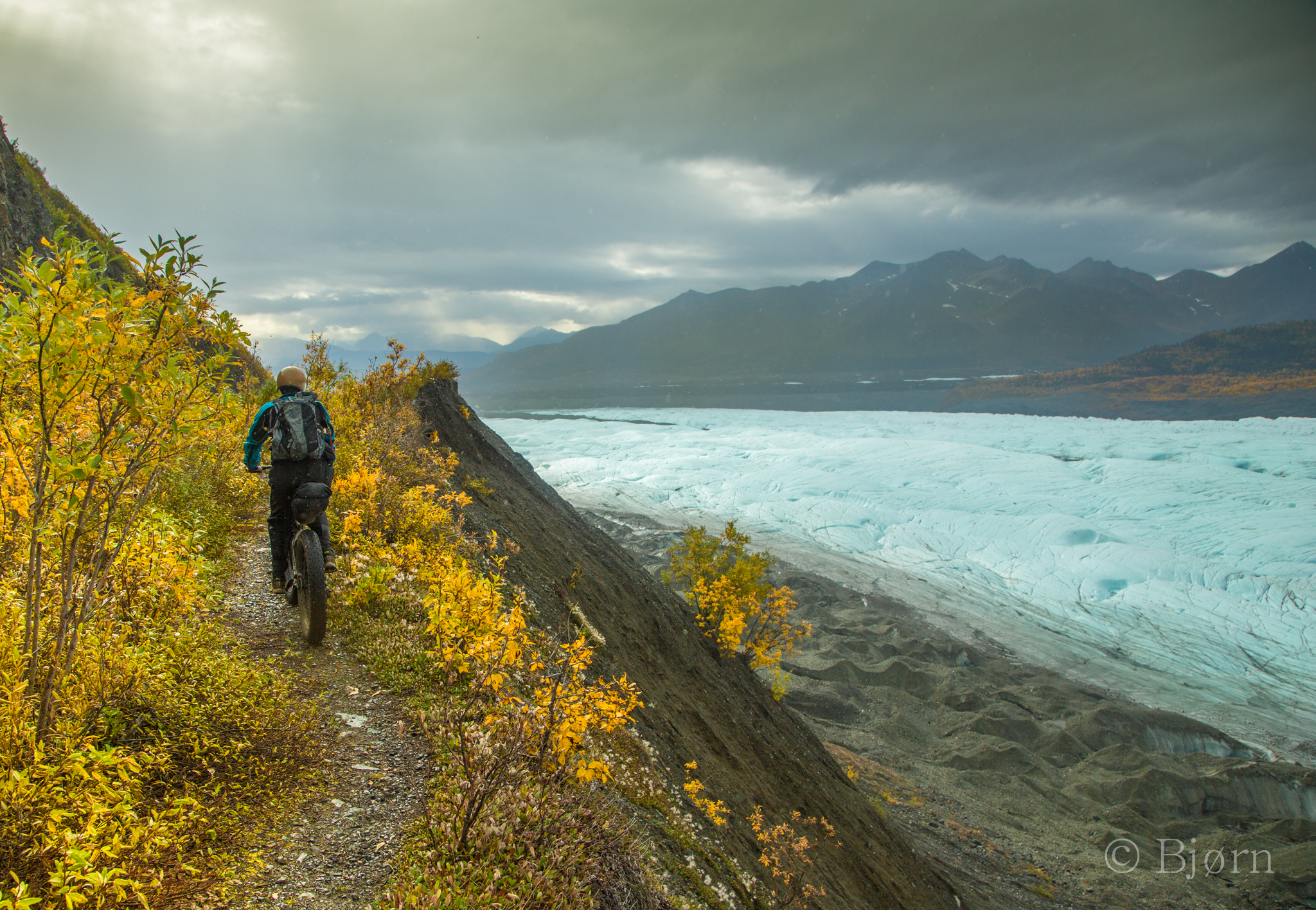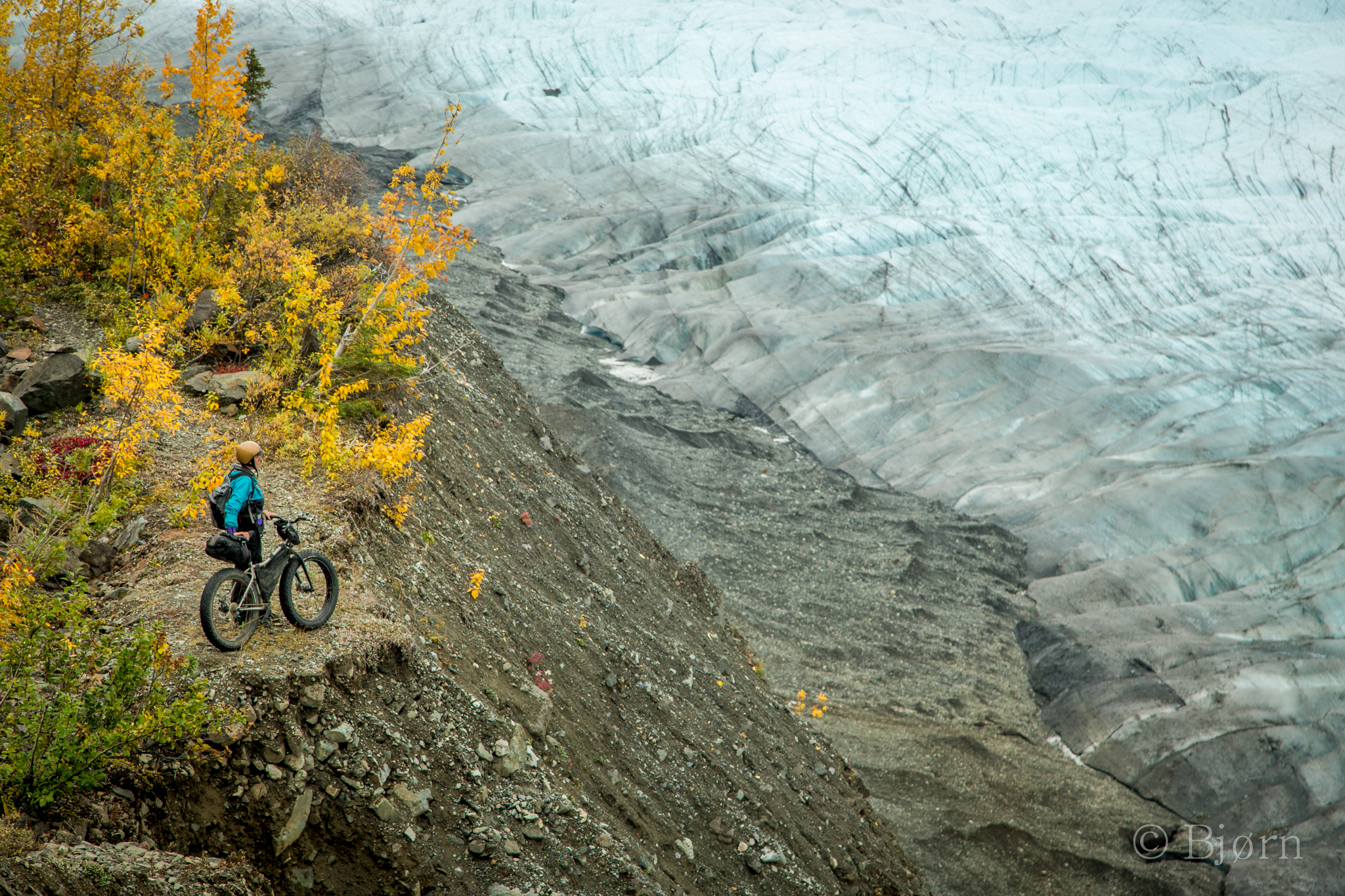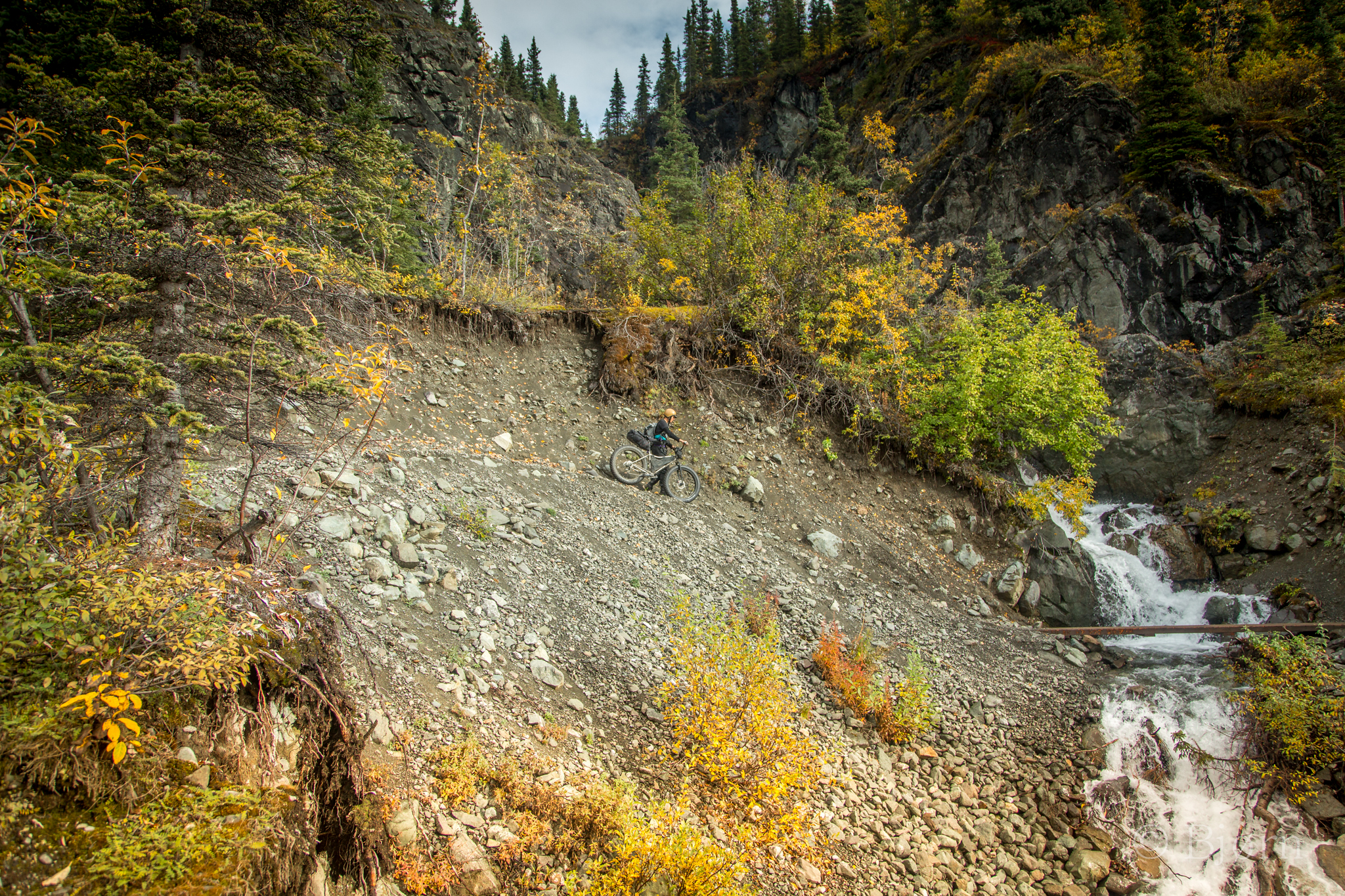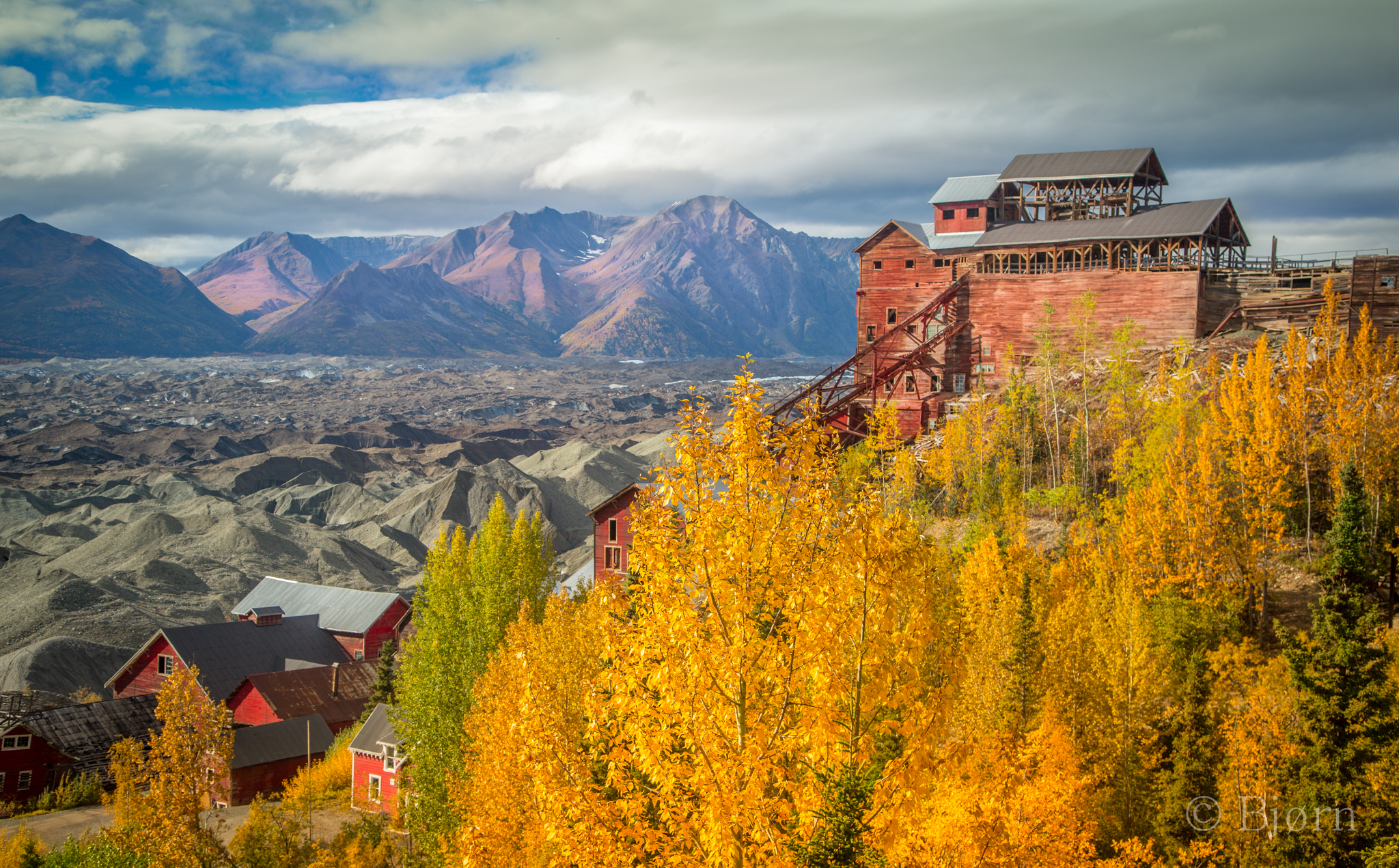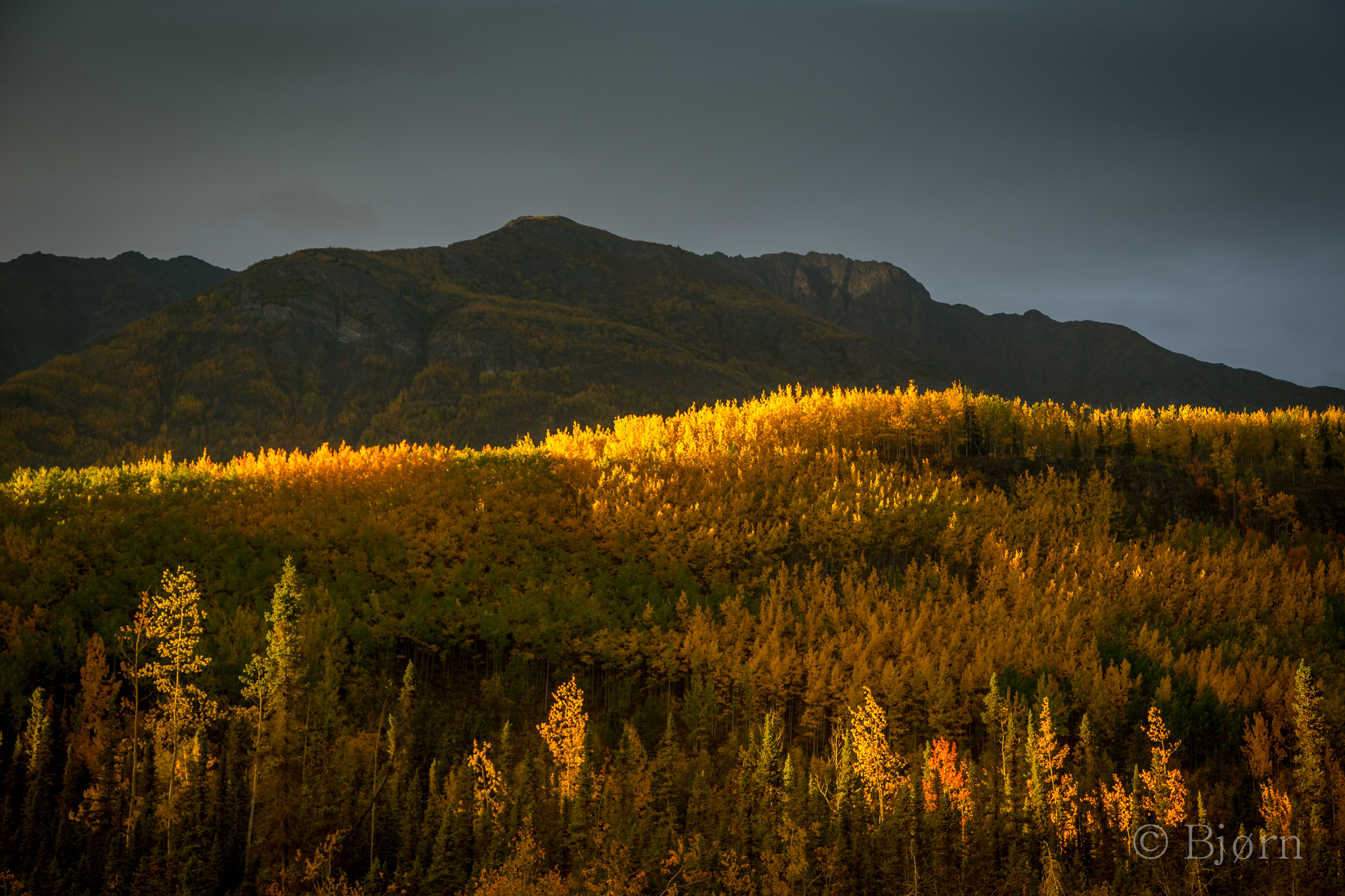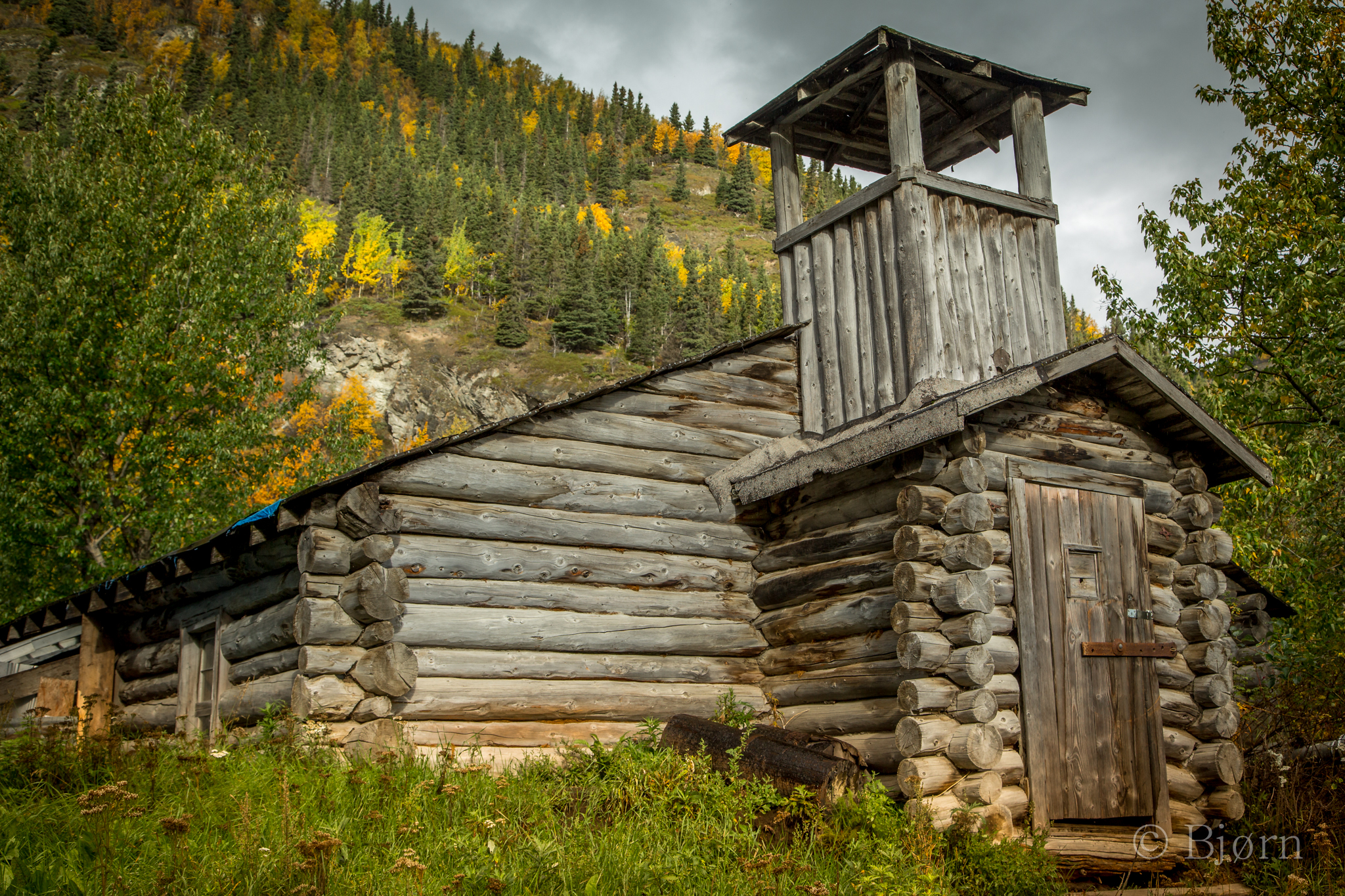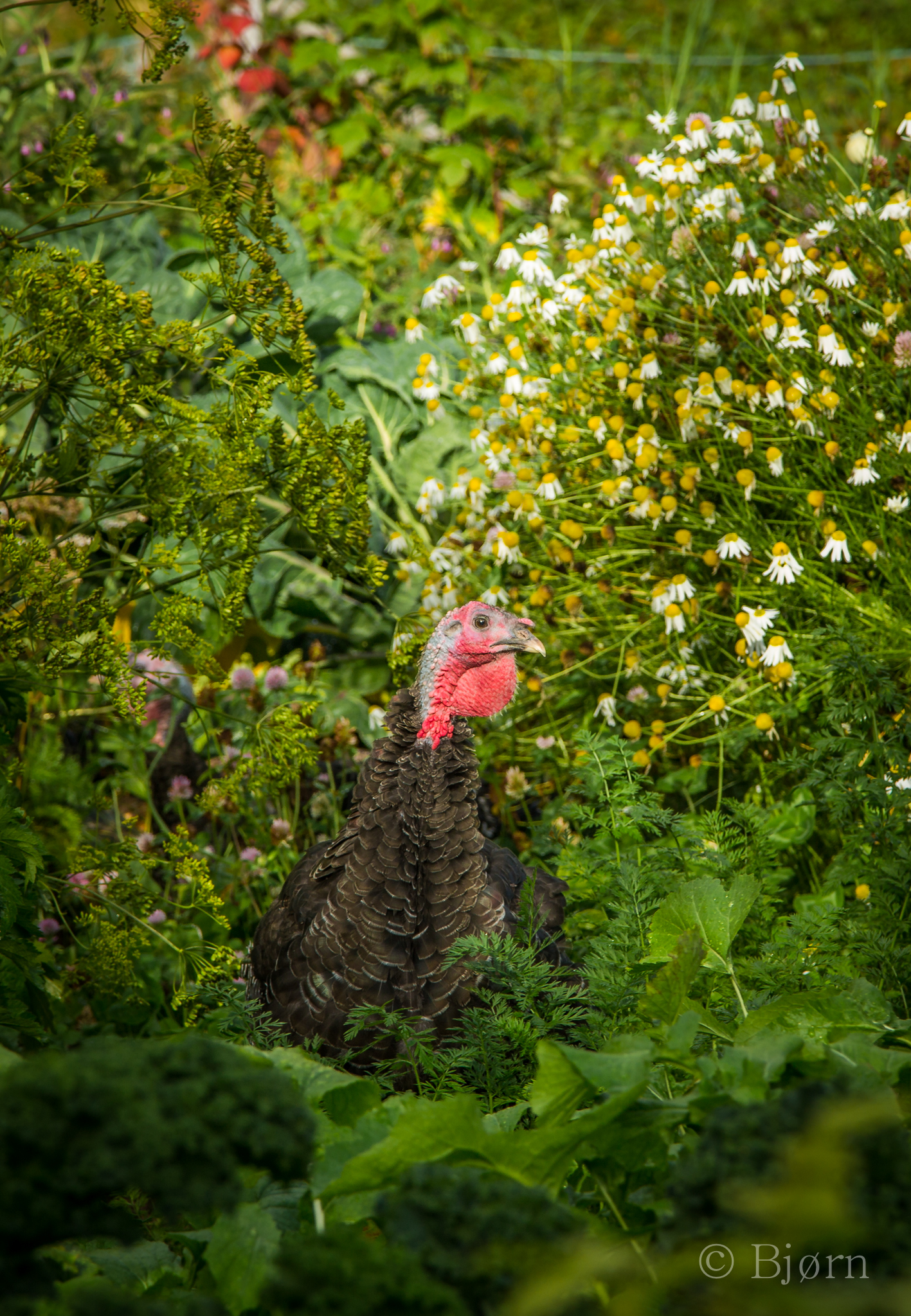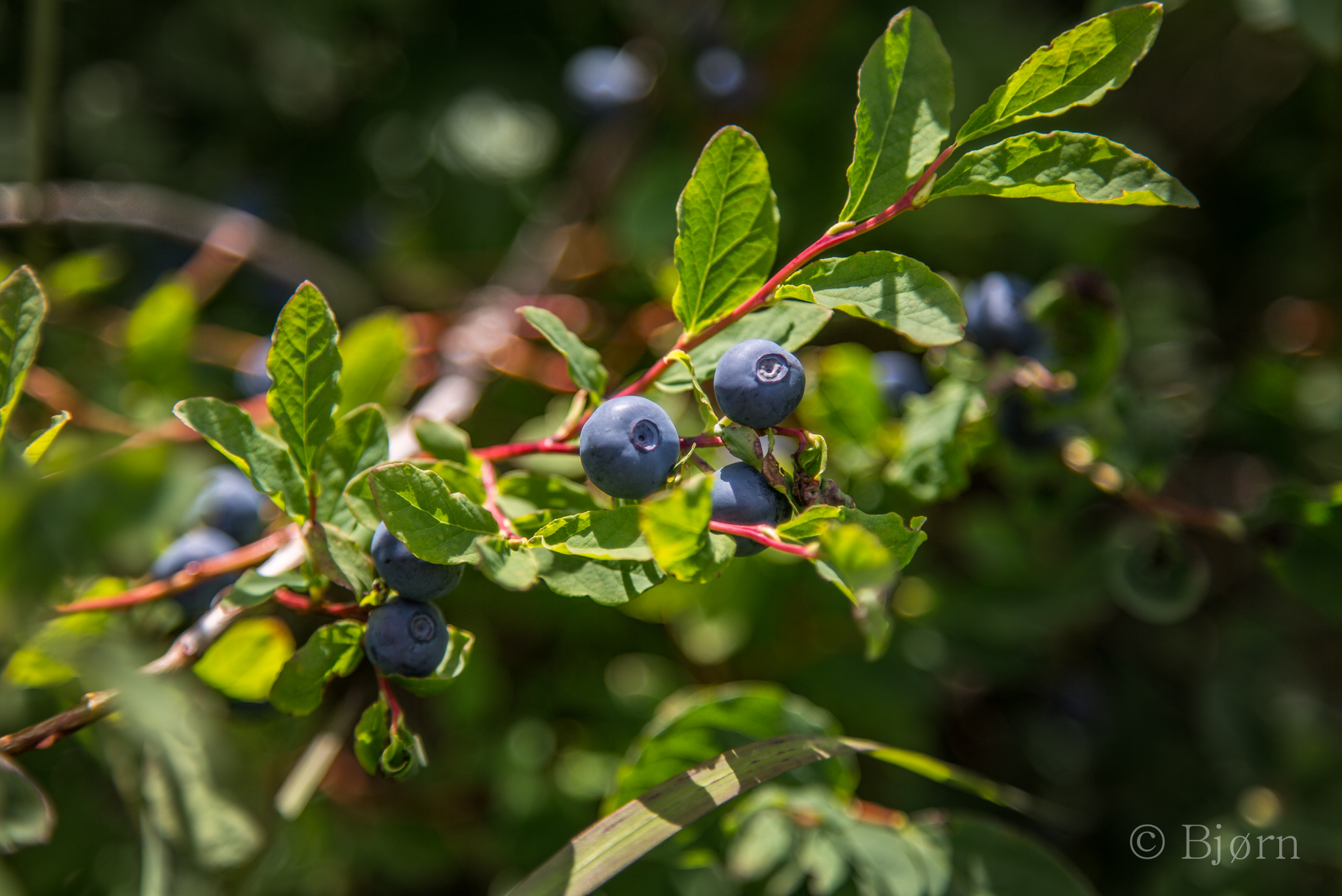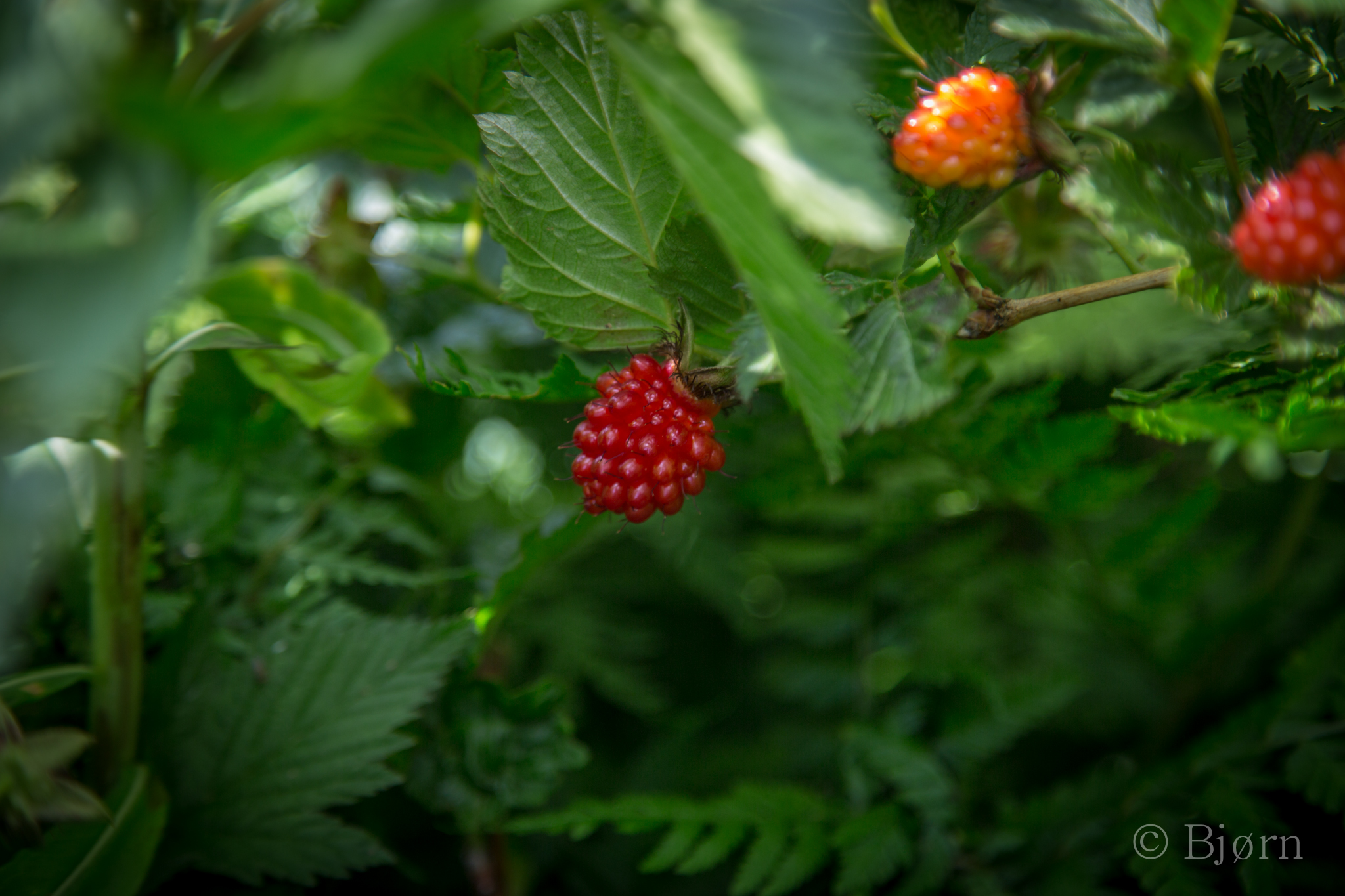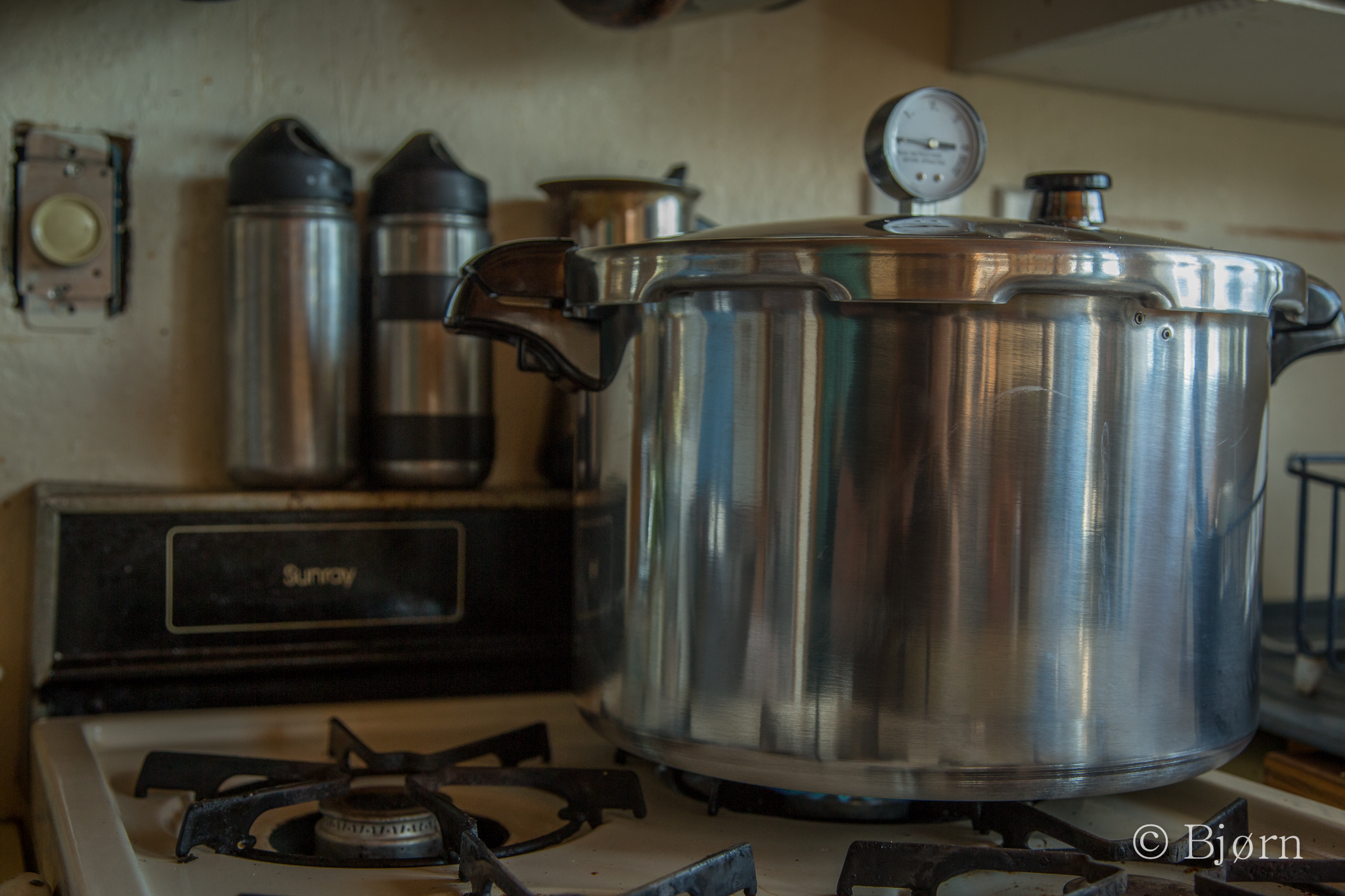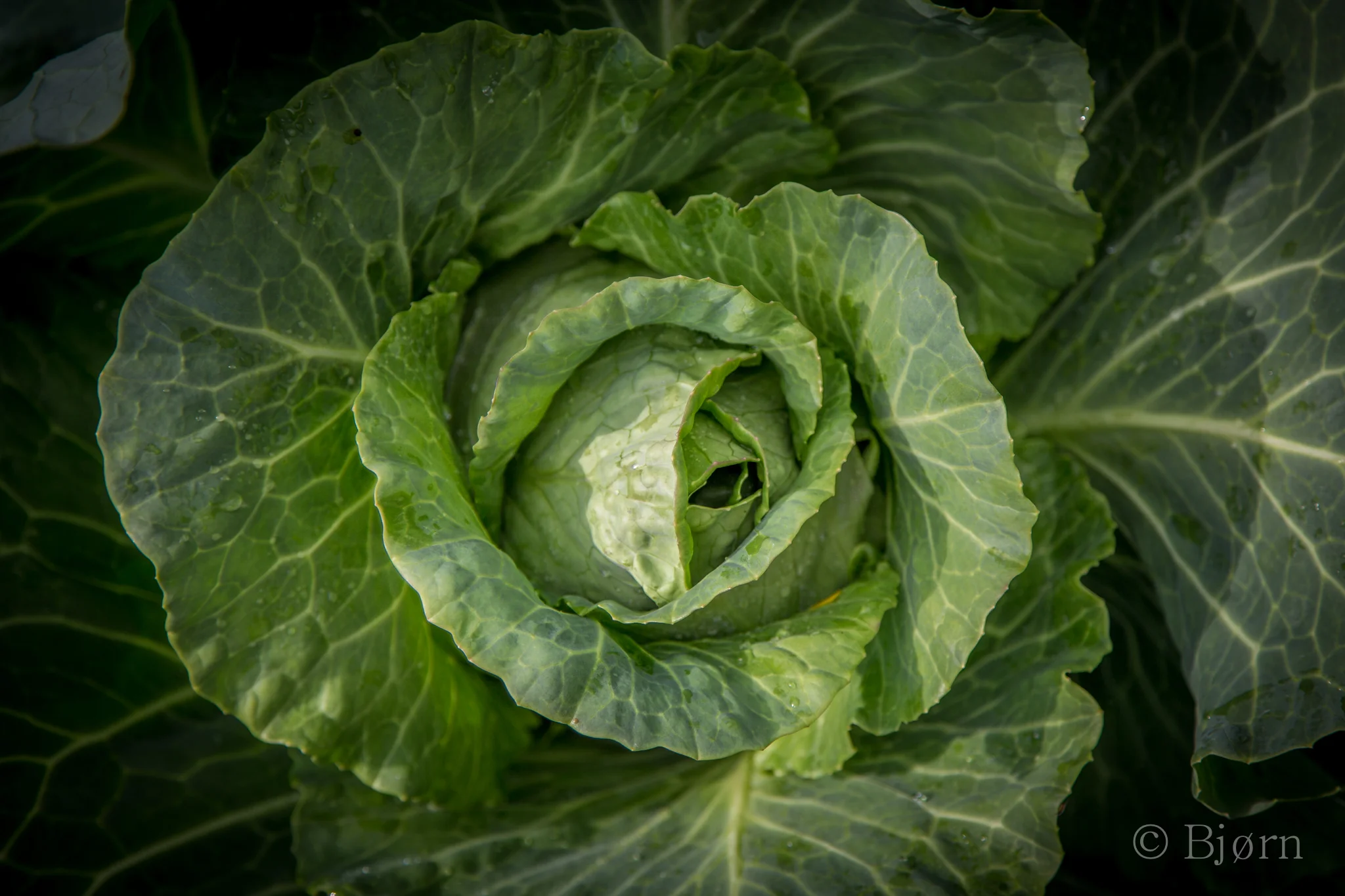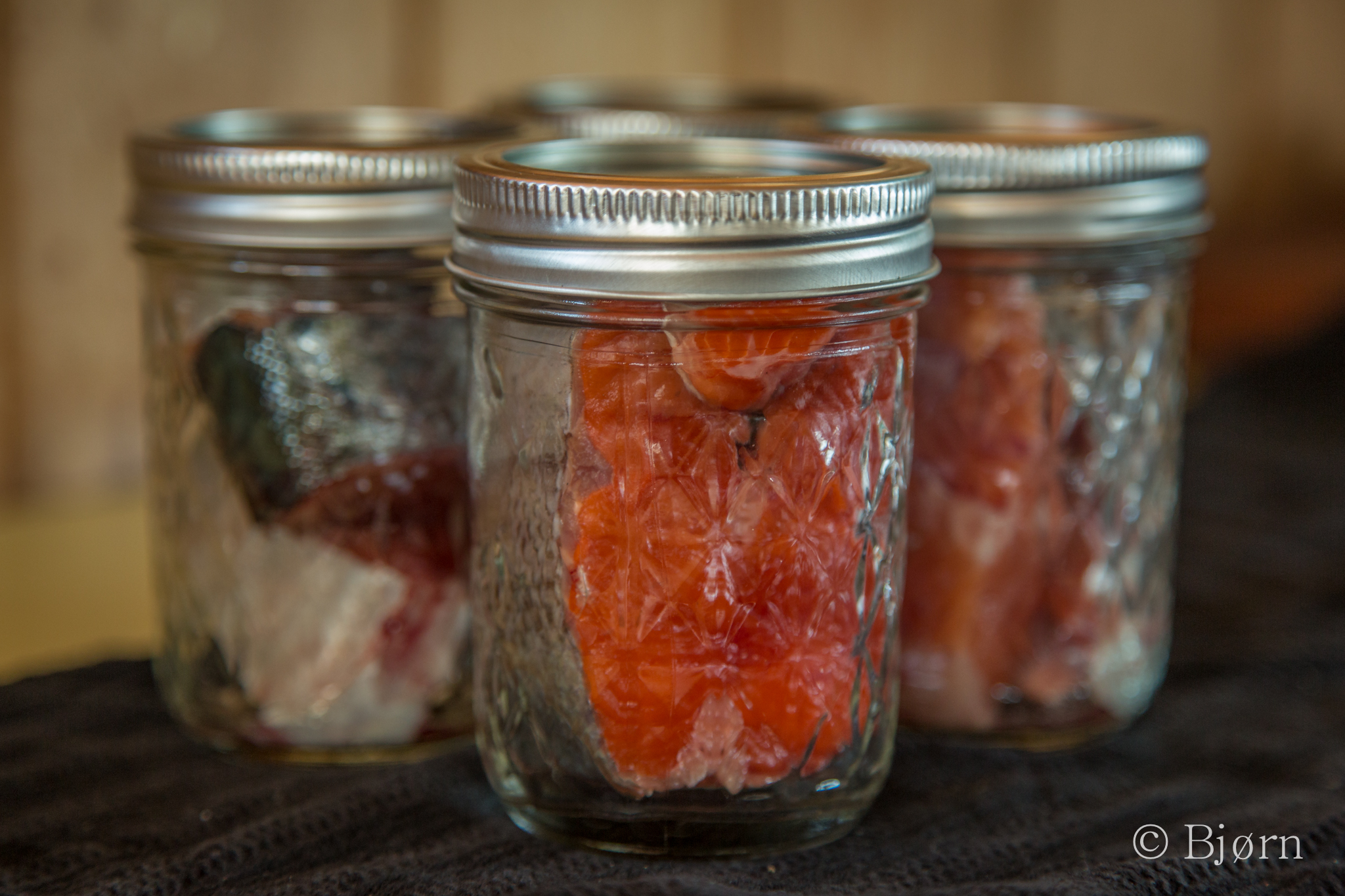Wind-crusted snow obliterated our faint trail and my 12cm wide fat-bike tires ground to a halt again. I dismounted the bike, brushed the hoar ice off the fur rough that shrouded my face and breathed in the cold, late March sun. My gaze scanned ahead and behind, then paused to marvel at the seemingly drunken path my bicycle tires had carved into the snow.
The rosy-orange sunlight was still above the mountainous horizon but my girlfriend Kim and I were exhausted from our strenuous day of pedaling and pushing our bikes over the fickle snow trail. It was time, we agreed, to push off the faint path through the cold, crunchy snow, work our way to the closest stand of willows and make camp.
We had been cycling north from Anchorage, Alaska’s largest city, for three weeks. Our expedition began in late February on a 2 meter wide, wilderness snow trail, that we hoped would lead us 1,700km, to the arctic community of Kotzebue, on an untested route. Our success depended on good snow and weather but winter snow trails can be as ephemeral as smoke and clouds. After 1,300km we began to wonder if our luck was about to run out.
Kim and I live in Homer, a small, coastal, fishing and summer tourist community in South Central Alaska. Our lifestyle is simple. We live in a small cabin by the seashore, we work and we save, and we do human-powered trips through Alaska.
Alaska is my native home and since my teenage years I have had a passion for exploring her hidden secrets and deepening my understanding of this “last frontier”.
Most archeologists place the first inhabitants of Alaska sometime around 8,000BCE. The first peoples migrated over the Bering Land Bridge from Asia – some settled these cold northern lands while others continued south and east to colonize the rest of the hemisphere.
Not until the 1700s did Westerners first make their presence known. Again, it was from the west that they came – Russians driven by the lure of easy money in the form of sea otter pelts. By 1867 the otter were nearly extinct, much of coastal Alaska had been forcibly subdued and Christianized, and laissez faire capitalism had been introduced. Alaska had experienced its first big economic boom and bust.
Much to the chagrin of the rest of the nation, U.S. Interior Secretary, William Seward, under President Lincoln, proposed to buy Alaska from the Russians for $7million – roughly equivalent to one U.S. dollar per acre. “Seward’s Ice Box” and “Seward’s Folly” were the derisive terms of the day - that is until gold was discovered and a new crop of acquisitive pioneers marched north to the future.
Fossil fuels are Alaska’s current primary economic driver and the latest boom in our sad saga of peaks and valleys which tend to enrich a few while leaving devastated communities and despoiled landscapes behind.
Alaska is on the front lines of climate change and nowhere is this more apparent than in rural Alaska where people still depend on snow and ice to travel in winter months to harvest the wild game that sustains them.
Beyond adventure, Kim and I wanted to travel south to north across Alaska and into the arctic to experience these changes. Ground Truth Trekking is a small nonprofit we work for which is based on the idea that by traveling at human speed through vast landscapes we can enrich our understanding of some of these complex issues, then share our insights with others.
Preparing for long winter expeditions requires months of training, planning and foresight. Kim and I have many long, winter fat-bike trips under our belts but our proposed ‘Fat-Bike to the Arctic’ expedition was our most ambitious. We took all our years of experience and laid them on the line. But experience, physical health, and preparedness can easily be subdued by early thaws, persistent storms and other meteorological phenomena that are becoming harder and harder to predict.
The evening we pushed our bikes through the wind-crusted snow to the stand of willows we each unloaded our camping kit and together we set up our floor-less, pyramid shelter. Each evening of our expedition Kim and I switched chores. That night was my turn to cut firewood while Kim assembled our lightweight titanium wood stove inside the shelter.
The wood stove was our only means of cooking but we’d finally traveled far enough north that the warmth it provided was truly necessary. For the entire first week of our expedition Kim and I pedaled and pushed our bikes in unseasonably warm temperatures. The snow melted and long stretches of open water threatened to prematurely end our expedition.
Our route followed the famous Iditarod Sled Dog Race Trail for 1,200km, to the frozen Bering Sea, then broke off and continued north over land and sea above the arctic circle to the north western community of Kotzebue.
A warm and snowless winter continued right up to the week before the Iditarod Sled Dog Race, which threatened cancelation or a re-start further north in Fairbanks. At the eleventh hour race officials decided that despite the lack of snow the route would suffice.
On the far side of the Alaska Range, Kim and I took a layover to let the dog teams catch up and pass us. A gravel runway and a small Bureau of Land Management cabin is the entire infrastructure that makes up the abandoned community of Rohn. During the race, however, the dormant cabin and lonely airstrip comes alive as a race checkpoint – full of veterinarians, dog handlers, race marshals and media. Kim and I were quickly enlisted to help with chores and handling weary dog teams as they entered the checkpoint.
As the bruised, broken and wide-eyed mushers began to pull into Rohn, Kim and I finally got a glimpse of what the trail must have been like for the mushers and their dogs. For us, on bikes, the descent from The Alaska Range had been bliss. The trail from the summit of the pass had been on snowless dirt and rock, with little off angle patches of ice and hastily assembled bridges that crossed open stretches of water. For the mushers it had been hell. Controlling 12 to 14 powerful sled dogs on long, tight descents is difficult with plenty of snow. Without snow it was a recipe for disaster. In the end, over 15% of the teams would scratch out of the race from this checkpoint.
Our first cold snap came while we traversed the long and lonely stretch of trail between the Kuskokwim and Yukon Rivers. This region is affectionately known as the Inland Empire but to our eyes it was a hungry and sparse land that we hoped to quickly cover before the wind and snow erased our trail.
The Athabascan village of Ruby and a resupply of food awaited us on the shores of the Yukon River but when we rolled into the village the place seemed abandoned. Despite the brilliantly sunlit evening no one was out. After making several circuits around town, two well-dressed women on a paddle-track snow-machine, the ubiquitous vehicle of roadless Alaska, stopped to greet us. They informed us that a local elder had recently passed away and that everyone was attending a potlatch * in his honor at the school. They insisted that we attend. With empty stomachs we graciously accepted.
Inside the school gymnasium we were made to feel comfortable as heaping plates of food were handed to us. Over the next hour many people came to sit next to us on the bleachers. They wanted to inquire about our adventure but they also wanted us to know that the man they were honoring was a man of the trail. A man who’d known the pangs of hunger and in turns how to share his bounty with fellow travelers. “He would have been the first to welcome you and the first to see that you were in need of company and nourishment,” they all said.
After our second week out we finally reached the Bearing Sea and the frozen Norton Sound. This was Kim’s first experience with sea ice but both of us were equally elated and awestruck as we smoothly biked over a vast sea of frozen water.
As we rode over the sea ice in predawn light one morning my emotions caught me off guard and I broke down. The pink and orange sunrise was spectacular beyond description and I was filled with the first intuition that our trip may actually be successful. I felt my mother’s presence who we’d delayed the trip a year for while we cared for her with a terminal brain tumor. Under my goggles, cold tears streamed down my cheeks. I felt an overwhelming sense of love, life and appreciation for this place and my parent’s wise decision to bring me into the world in a land as spectacular and mysterious as Alaska.
Space is often hard to judge in low-lying, arctic landscapes where the white of the snow below matches the hue of the sky above and very few landmarks provide contrast for your eyes. In the distance we could see the wind turbines of Kotzebue but as the hours passed and the kilometers rolled under our tires the gently whirling landmarks appeared to grow no larger or closer.
Near the end of the day we entered the outskirts of the community and it was Kim’s turn to be moved to tears. After years of meditation and 36 days on the move we’d finally reached our goal.
For thousands of year’s winter has been the time of travel and migration. We are eternally grateful to have sneaked through and caught a glimpse of this vast landscape and its people before the uncertainty of winter replaces the tradition of frozen adventure.
* Potlatch: traditional Alaskan Native ceremonial feast. In modern times all attendees bring a food dish to share with the assembly.











